LARP (or ‘live action role-play’ for those in the know) is a sort of community art, where participants create and inhabit characters in order to engage in collaborative storytelling. Here, we’re going to dive into the history of the hobby, so it might help to start by reading our super-quick primer FAQ about LARPing – so that you can read this article knowing a little bit about the modern LARP hobby, with its different varieties and styles.
To some degree, people have always LARPed. The simplest childhood games – ‘cowboys and Indians’, ‘cops and robbers’, are a form of live-action roleplay: inhabiting simple roles within a loose or rule-free atmosphere, frequently using tropes taken from dominant culture. Children have probably played this sort of game at least as long as humans have been anatomically modern – so we could say that LARP has a 300,000 year history! The world’s oldest storytelling traditions stretch back into this ancient past; for example, First Nations Australian oral tradition amongst the Gunditjmara people records accurate descriptions of geological events that happened in their region about 37,000 years ago. Indigenous African religions also frequently include elements of roleplay, with people inhabiting the roles of spirits or gods for specific ritual and social purposes: for example, members of the Ogun people of Benin clad themselves in dyed long-grasses and masks to assume the role of the zangbeto, a sort of spiritual policeman of the community. But, to save our history of ‘what is LARP’ becoming (as it should be) a history of human storytelling and human psychological history more generally, we shall here confine ourselves to LARP’s most recent incarnation: as a subculture involving dressing up as fantasy characters to participate in some form of structured game.
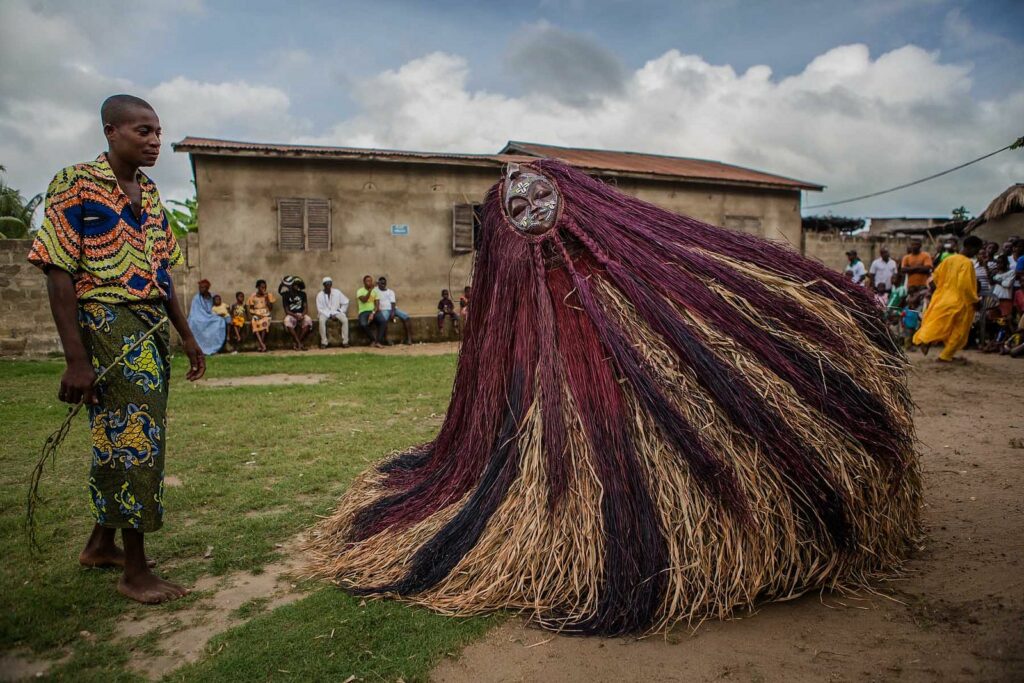
But where did LARP come from? What is LARP, and how does LARP work? The DNA of what is LARPing is a triple-helix, made up of three intertwined strands that fed (and feed) into each other: early ‘nerd’ subculture, earthy re-enactment and living history, and the improvisational theatre scene. Here, we’ll get to grips with each of these three sources to get us into the deep lore of what is LARP.
The Tabletop Revolution
So – to get to grips with what is LARP, we’re going to delve back into the murky past: into the dank forgotten archives and the mouldering dungeons of an arcane time, where strange people, speaking weird jargons and wearing fantastical clothing, played games the likes of which we would barely recognise. A time called the 1970s.
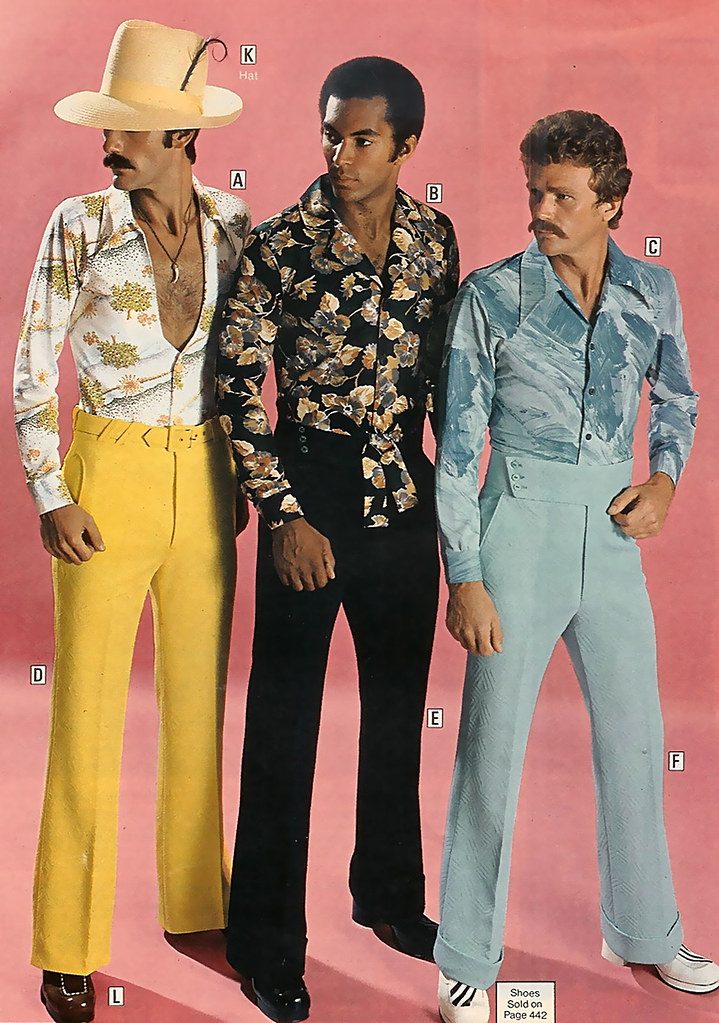
If we’re going to get a full understanding of what is LARPing, we have to go back to the genesis of ‘nerd culture’. Whilst it’s impossible to reduce a global subculture to a single individual, there are few people who had more influence over the fledgling nerd world than a Chicagoan high-school dropout named Gary Gygax.
The Age of Gygax
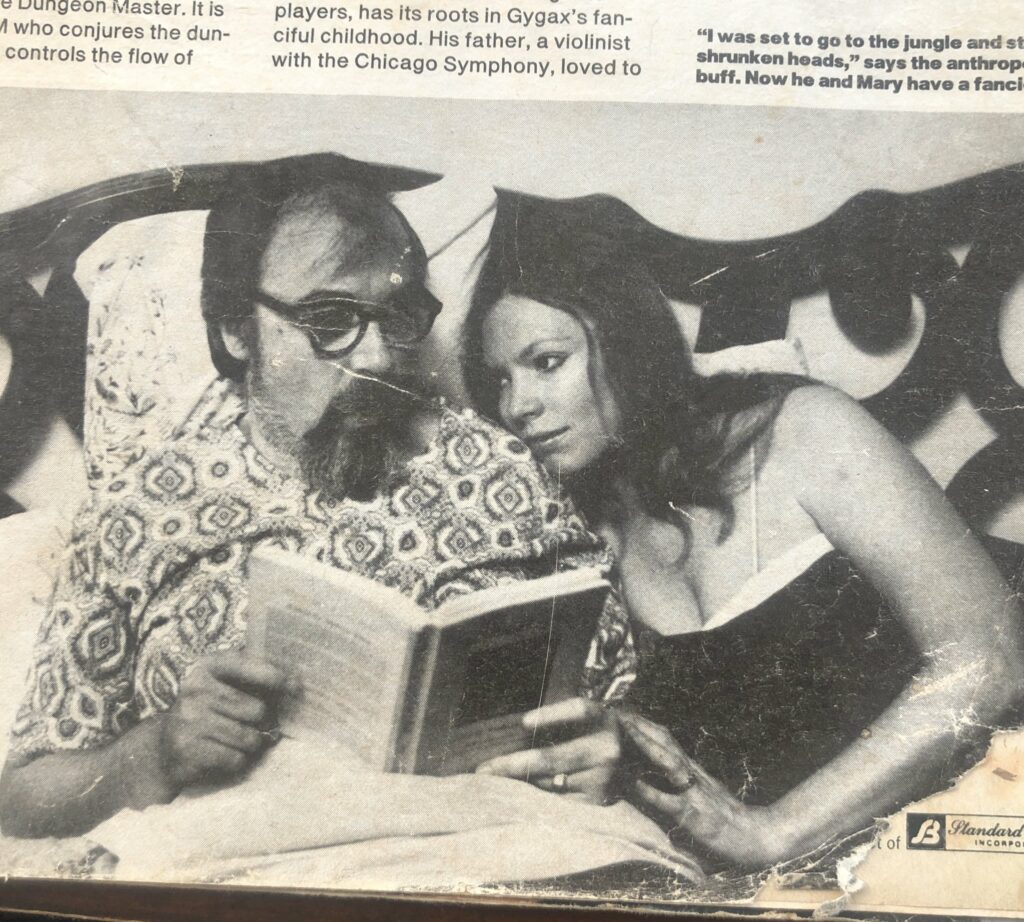
Gygax was far from the ‘first’ nerd – the twin social trends of affluence and disaffection in 1950s America spawned a revival of interest in European mythology, folk histories, and the medieval world. A resulting wave of fantasy fiction, informed by 19th century proto-fantasy writers such as John Ruskin and George MacDonald, saw J.R.R. Tolkien’s The Lord of the Rings, Mervin Peake’s Gormenghast, Ursula K. LeGuin’s Earthsea cycle and many others set the imaginations of the maturing Baby Boomer generation ablaze. Whilst mainstream fantasy such as the landmark 1963 Greek-mythology-fantasy film Jason and the Argonauts wowed the big screen, groups of fantasy inspired men (frustratingly often, only men) were beginning to devise ways of taking a step further into these exciting and bold fantasy worlds: not just watching or reading, but being. Dissatisfied with the menial jobs available to him, Gygax was one such nerd, spending long evenings devising gaming systems to play out fantasy on the tabletop. In fact, such was his obsession that his wife Mary became convinced that he was being unfaithful to her – and, upon marching into a friend’s basement to confront him in flagrante, found Gygax and his friends clustered around a gaming board.
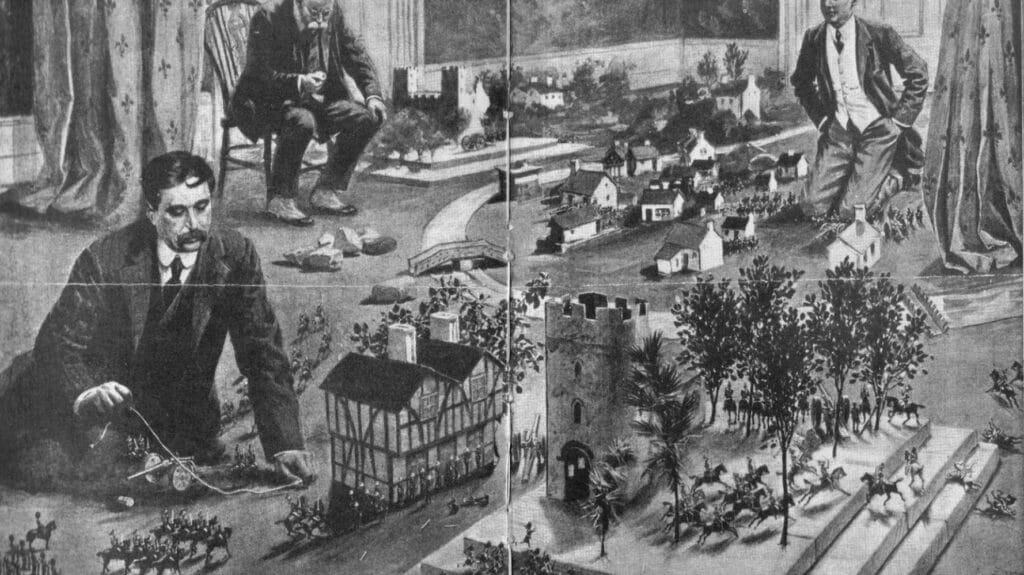
Early tabletop roleplaying games (TTRPGs) were strongly influenced by the pre-existing ‘wargaming’ community: with its roots in the early 19th century exercises used in military schools to game-out real world strategies, gentleman generals would use ranks of small lead-cast figurines and simple rulesets to recreate (and see if they could overturn) the battles of medieval and Napoleonic Europe. Gygax’s first serious tabletop game, entitled Chainmail and published in 1971, was one such gaming system. Developed with another wargamer named Jeff Perren, Chainmail’s rules were designed to govern battles in a real-world Medieval setting. It operated around rolling two six-sided dice (2d6) to resolve battle outcomes, but unlike many other systems which abstracted combat to the ‘mass’ level of formations vs. formations, Perren and Gygax’s rules were one of the first to depict ‘man-to-man’ combat, with outcomes decided at the level of individuals. As well, where almost all other wargaming systems depicted a ‘realistic’ medieval or Early Modern world, Gygax included in the ruleset a 14-page fantasy supplement that gave additional rules for fantasy troops such as elves, orcs and dragons, inspired by Tolkien, Conan the Barbarian and Poul Anderson’s Broken Sword. It is this supplement, included by Gygax as an afterthought, combined with a ruleset that dealt with outcomes at the level of individual warriors, that would spawn everything that followed.
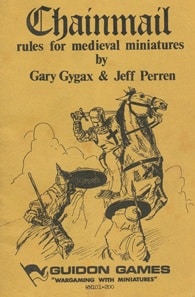
From Battlefields to Dungeons
Gygax’s fellow wargamer Dave Arneson took the Chainmail combat rules, and expanded them by adding some of the staples that form the bedrock of modern TTRPGs. Building on a game called ‘Braunstein’, a sort of historical Dungeons and Dragons prototype set in a single town in Napoleonic Europe, Arneson and Gygax merged their respective games into a single game, with experience points, different classes and abilities, set within a fantasy realm replete with dungeons, knights and fantasy monsters, with rules built around twenty-sided die (d20) rolls to decide outcomes. Originally, their game was called simply ‘The Fantasy Game’, but legend has it that, when posed with a number of possible titles, Gygax’s daughter exclaimed “Oh Daddy, I like ‘Dungeons and Dragons’ best!”
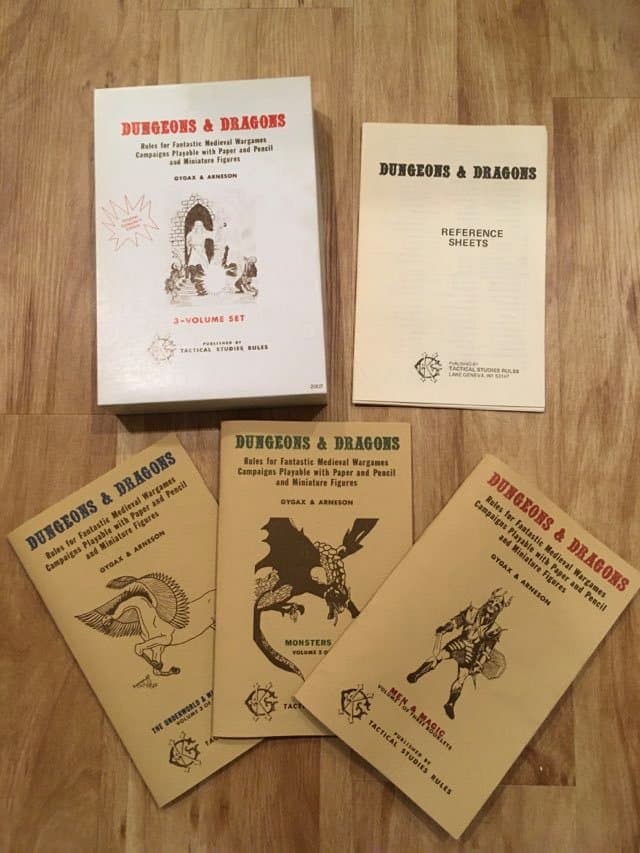
The first edition of Dungeons and Dragons was released in 1974, and it was immediately successful, spawning dozens of other roleplaying systems that drew influence from (or shamelessly imitated) the original – including Chivalry & Sorcery (1976), RuneQuest (1978), Call of Cthulu (1981) and GURPS (1986). This flourishing gaming scene fed into the burgeoning nerd subculture, buttressed by meet-ups and events such as Gen Con (which began as the Lake Geneva Wargames Convention, founded by Gygax in 1968), Origins Game Fair (focusing on wargaming, founded 1975) and DragonCon (for comics and cosplay, founded 1987). Such was the explosion of nerd culture in the 1980s that it drew the attention of the Evangelical movement in the US and Europe. TTRPGs, with their dark medieval themes, were accused of encouraging paganism, Satanism, demon-worship and even of opening portals to the netherworld, in the so-called ‘Satanic Panic’.
Playing With 1:1 Scale Miniatures
Early nerd culture fed directly into the formation of the proto-LARP scene. Indeed, we can’t understand what is LARPing without seeing the direct crossover from TTRPGs into the LARP world almost as soon as they became popular. Brian Wiese, then a freshman at the University of Maryland, organised the ‘Hobbit War’ in 1977. Wiese cites inspiration from the classic swashbuckling epic Robin and Marian (1976), which he saw whilst midway through reading Tolkien’s The Lord of the Rings. Wiese claims to had never heard of medieval re-enactment or Dungeons and Dragons – but its timing clearly struck the zeitgeist of late 1970s nerd culture. Wiese’s events soon quickly spiralled in popularity: they were ‘rules-light’, focusing on costumed combat in homemade outfits, using wooden sticks cushioned with taped-up pillows to create a safe but satisfying weapon, quickly christened the ‘boffer’.
By 1980, the burgeoning sport had attracted much media interest and many new players across Maryland and DC, and the rules were formalised into a game named Dagorhir by its founder. Today, Dagorhir is probably the oldest extant LARP game, comprising an international federation with thousands of players on almost every continent (if you’ve LARPed in Antarctica, please feel free to write in to correct us). This trend matured into the modern ‘demonstrative’ LARP subtype, using physical combat and minimal roleplay to inhabit characters – we can think of this as a manifestation of the wargaming roots typified in Gary Gygax’s Chainmail game.
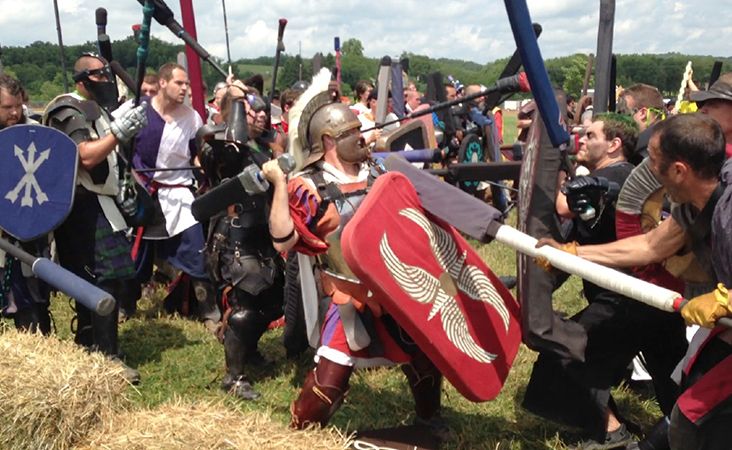
Whilst one trend emerging from the tabletop milieu went in the direction of ‘demonstrative’ LARP, another sought to bring the ‘tabletop’ to the LARP field. This type of LARP seeks to keep most of the elements of TTRPGs, and apply them to the context of real-world gaming. Often called ‘adventure LARP’, this trend is recognisable to anyone who has played Dungeons and Dragons: a group of protagonist player-characters progress through a reasonably linear adventure, facing puzzles and challenges. Usually, the gameplay is directed by a referee or ‘Dungeon Master’ (DM), and unlike the ‘boffer’ style of demonstrative LARP, combat outcomes are usually resolved figuratively: for example, by rolling dice or by drawing cards. There may be systems defining classes, special abilities and experience and progression. Certain compromises and changes have to be made for the translation from the tabletop to the real-world: for example, some LARPers choose to ‘monster’ for adventuring parties, depicting the non-player enemies opposing the player party with costuming and special effects.
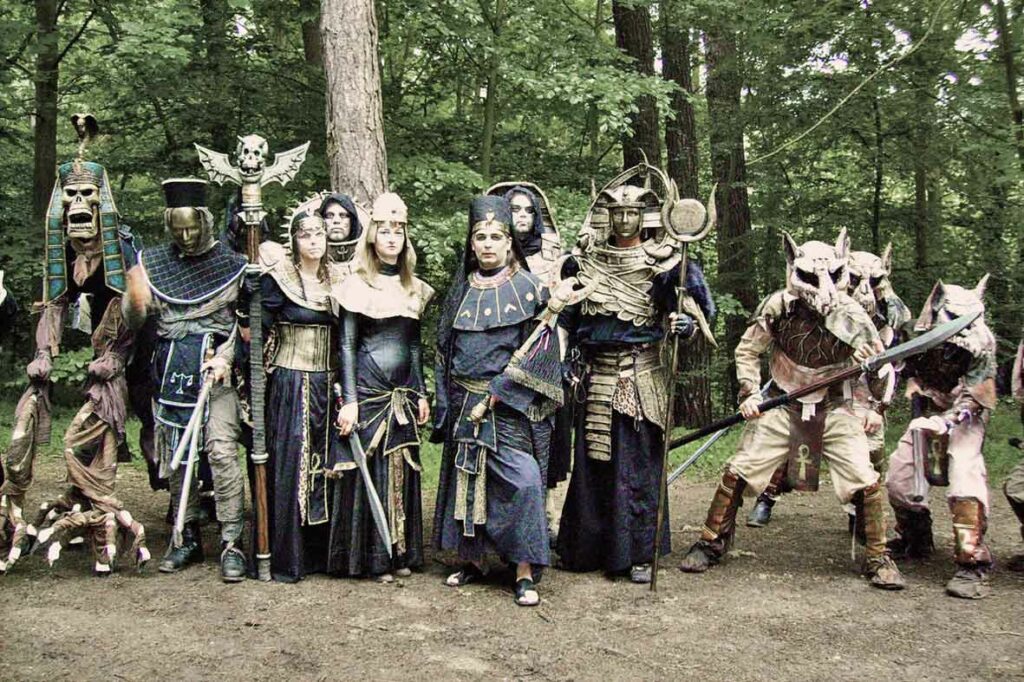
Effectively, we can think of this type of LARP as a TTRPG, except one in which the players inhabit their characters, instead of depicting them in miniature! One of the earliest LARP games to explore bringing ‘tabletop’-style roleplay to the field was the International Fantasy Gaming Society (IFGS), founded in 1981. Where Dagorhir began on the East Coast, the IFGS traces its heritage to the foothills of the Rocky Mountains near Denver, CO. It began as a group of friends acting out their TTRPG games, and has now grown to national significance – with a dozen chapters across the US, and a codified and frequently updated rulebook.
Re-Enacting The Past
The second strand of the triple-helix that makes up what is LARP is historical re-enactment. If we can imagine children playing make-believe all the way back into the distant past, we can imagine our most-distant ancestors around the camp fire, acting out their last hunt to the amusement of the very young and the very old. Historical re-enactment is this primal urge: to inhabit and emulate the past, in order to understand people who are alien to us.
Ancient LARPers
The earliest historical re-enactments (that we know) probably date back to the Classical period – most famously, the Roman Colosseum (and the dozens of smaller amphitheatres built across the Roman Empire) were the venue for regular pseudo-historical re-enactments. Groups of gladiators representing the different fighting styles and dress of Rome’s historical enemies would face off against one another, in mock-replay of Rome’s military glories. The Roman Collosseum (built in 70 CE with plunder sacked from the Second Temple of Jerusalem) could even be flooded deep enough to float specially-constructed warships, allowing spectators to witness naumachiae – brutal naval re-enactments featuring thousands of combatants and hundreds of oarsmen. Of course, unlike modern re-enactments and LARPing, Roman arena fights were bloody affairs fought to the death.
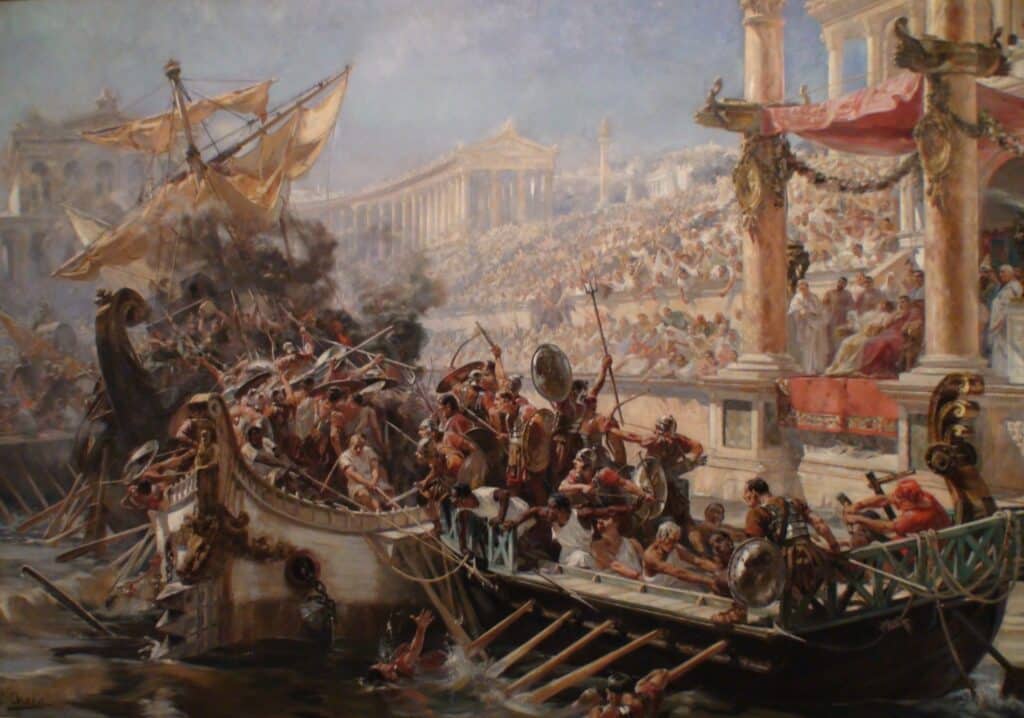
Perhaps the first ‘modern’ re-enactment was the 1674 re-creation of the Siege of Maastricht (which fell to the French armies the previous year), undertaken in London at the orders of King Charles II. A miniature fortress, 80 yards across with twelve foot-high walls, was built and garrisoned, with the Duke of Monmouth commanding the attack – as he had in the real battle. The five-day bonanza – including the detonation of mines under the fortification walls and the blank-firing of cannons, attracted huge crowds from the City, and was recorded by prolific Restoration diarist Samuel Pepys. In an episode not remotely redolent of the Roman naumachiae, the Duke of Buckingham would re-enact naval battles from the Napoleonic Wars on a lake in his estate. But the real re-enactors were the Victorians.
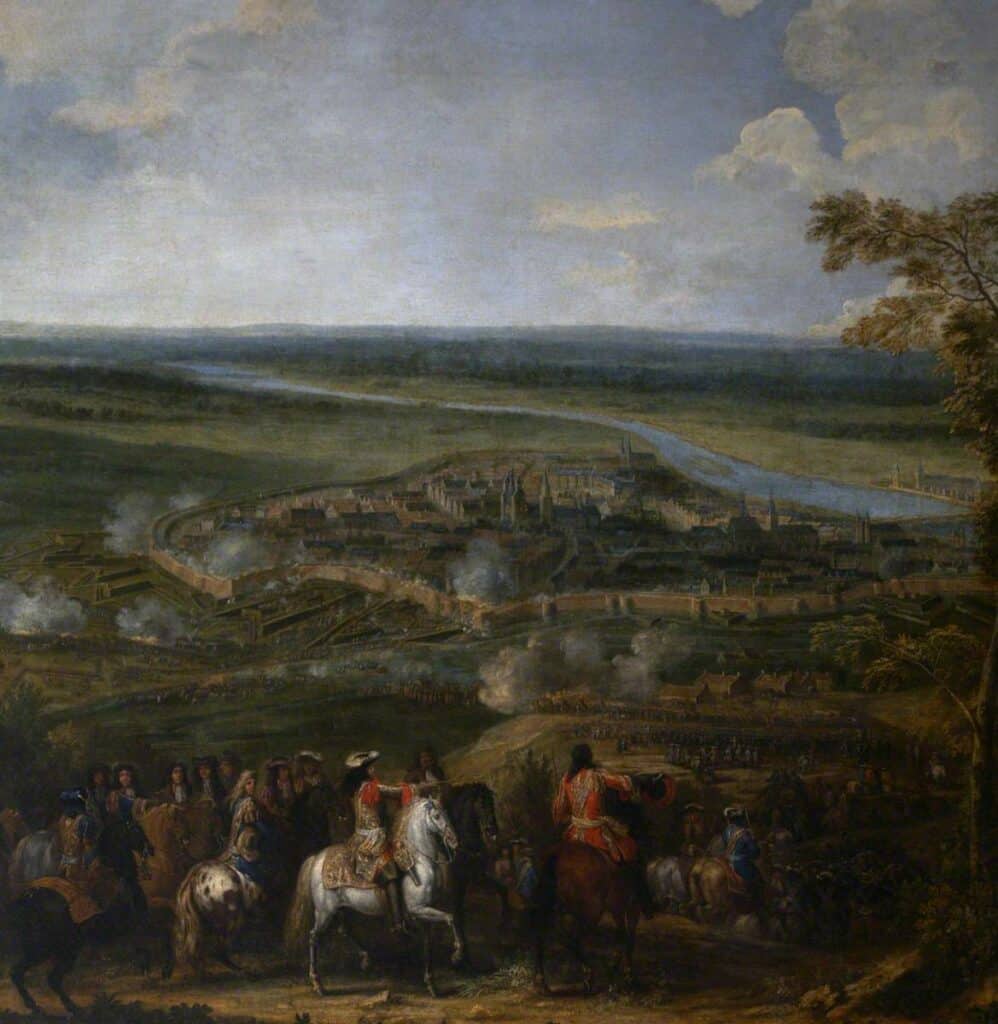
The Very Soggy Englinton Tournament of 1839
The event that really marks the start of modern re-enactment was the so-called Eglinton Tournament of 1839 – and it is really striking just how modern it was. The early Victorian era was flush with the Romantic movement: in opposition to the Classicist rationalism and scientific rigor of the Enlightenment, Romanticism embraced the medieval, the folk and the mythological – and it was a group of hopeless Romantics who conceived of a resurrected knightly jousting tournament, like out of the tales of King Arthur (historical accuracy be damned). Hopped up on their feverish consumption of Horace Walpole and Sir Walter Scott’s medieval-ish novels, the Romantics were horrified to learn that the dastardly Whig Prime Minister had opted not to fund the medieval pomp-and-ceremony during the coronation of Queen Victoria in 1838, throwing out the traditional medieval banquet and associated armoured pageantry. Around 150 knights of the realm resolved to put on a display fit for a queen – and some of them acquired genuine suits of Late Medieval armor (as well as having a few surreptitiously fabricated for the occasion). Lord Eglinton, one of the knights, offered his stately home of Eglinton Castle in Ayrshire, Scotland. The ‘Castle’ which was actually a Georgian mansion with mock-medieval towers added to it, made for a suitably Romantic venue – they planned to receive 4,000 guests in period-appropriate fancy dress.
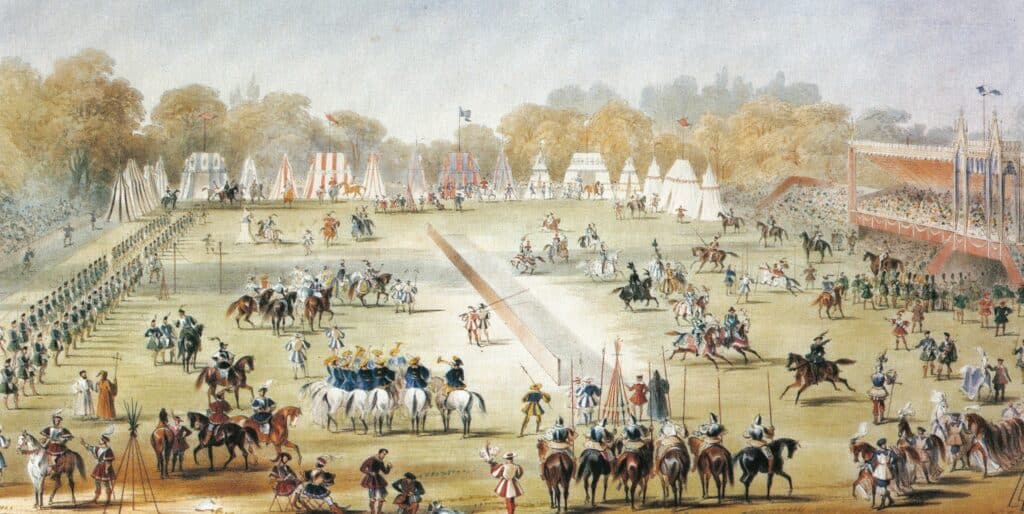
Instead, at the end of an unseasonally wet August, a crowd of over 100,000 flocked to this remote corner of Scotland, jamming every road and lane in the county, filling the town’s only hotel and being billeted by local residents. Freak rain-storms and winds turned the countryside into a crowded, muddy bog, and the three-day event was, in short, a noble disaster. Only a fraction of the attendees got to see anything remotely medieval, and the thirteen knights who made it could not compete at full-tilt on the waterlogged Lists. But the knights held a successful melee, and the evening saw a huge medieval banquet with toasts to the new Queen. Accordingly, the event was vaunted by the Tory press as a roaring success for Merrie Olde England (much to the scorn of every Whig in the nation). The Eglinton Tournament of 1839 has been cited as a landmark event in the Romantic era, shaping the course of medievalism in England, and popularizing historical re-enactment as a pastime.
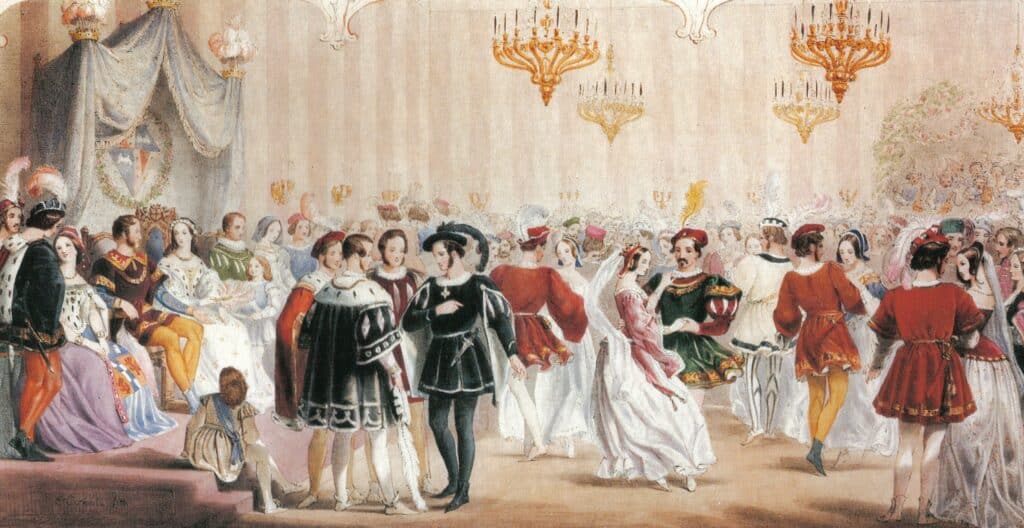
Re-Enacting The Present
Although re-enactment remained largely the province of the idle wealthy for much of the 19th century, its final quarter brought a more democratic interest in re-creating the past. Industrial society in Western Europe created an upwardly-mobile middle-class, with disposable income and time to spend on leisure pursuits, and so historical re-enactment became a growing hobby. In North America, a tradition of historical re-enactment was born almost immediately out of the 1861-4 Civil War, with veterans and officers re-creating Civil War battles to demonstrate how the war was fought, and increasingly to bring about reconciliation between Union and Confederacy. The Great Reunion of 1913 was a watershed moment, where more than 50,000 surviving veterans from both sides met at the site of the Battle of Gettysburg to witness re-enactments of various actions from the battle, including General Pickett’s infamous forlorn charge. Seven years later, in 1920 the fledgling Bolshevik government in Russia staged a mass re-enactment of the Storming of the Winter Palace, the climax event during the October Revolution in 1917 (it was this re-enactment which inspired Sergei Eisenstein’s groundbreaking cinematic depiction of the event in his 1928 film October/Ten Days That Shook The World). This history shows to us that historical re-enactment has been used to write history as much as to neutrally depict it.
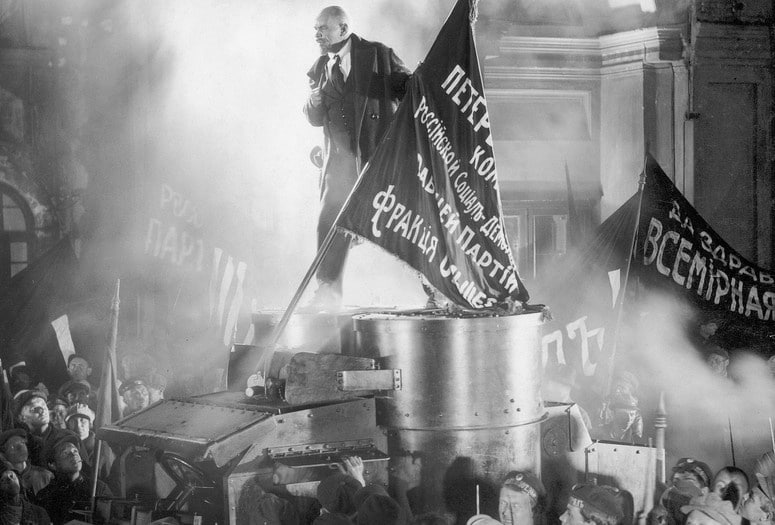
By the middle of the 20th century, re-enactment was coming of age as a popular subculture. The centenary of the American Civil War in the early 1960s brought renewed interest to re-creating the era, and the centenary re-enactments are credited as the birthplace of the modern hobby. In the UK, groups like the Sealed Knot, founded in 1971 and dedicated to the re-creation of the English Civil War in the middle of the 17th century, were springing up. As well, we’ve so far examined only combat re-enactment – at the same time, so-called ‘living history’ was blossoming as well. This involved the re-creation of past eras in a more holistic fashion, with the revival of heritage crafts, vernacular construction and architecture, and experimental archaeology (where practitioners test and discover historical methods). Degrees of accuracy and faithfulness in the re-enactment world vary, from loose ‘farb’ interpretations (from ‘far be it from the truth’) to hardcore progressive living historians, known derisively as ‘stitch-counters.
Farbs and LARPers
So what is LARP in relation to re-enactment? It was this fertile environment in the 1960s and 1970s that also began to inform the fledgling LARP scene. Where re-enactment seeks to depict historical reality as closely as possible, some re-enactors began to experiment with looser depictions still, incorporating elements of counterfactual history and fantasy. One of the earliest and most well-known of these groups was the Society for Creative Anachronism (SCA), founded in 1966 by a group of medievalists including fantasy authors Diane Paxson and Poul Anderson.
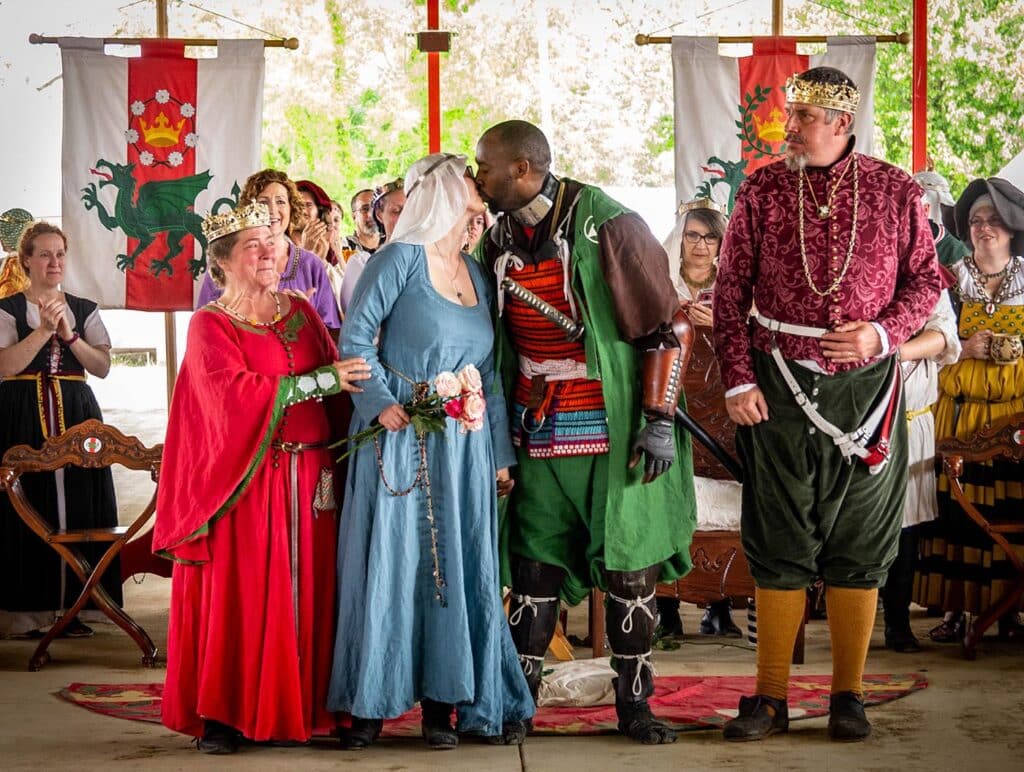
Formed around the loose idea of three ‘kingdoms’, the SCA became highly successful within a few years of its founding, and now has non-profit branches all over the world. We can definitively class the SCA as ‘low-fantasy LARP’ (ie. LARP within a non-magical, mundane setting). Whilst the SCA takes a lot of visual language from Medieval Europe, it is unconcerned with any specific period or conflict – its rules stipulate that attendants should wear “an attempt at pre-17th century clothing” – and its kingdoms are unrelated to any historical entities. However, unlike some other forms of LARP (particularly demonstrative LARP), re-enactment-informed LARP often includes elements from ‘living history’ – for example, the SCA have trade guilds and organisations that explore heritage crafts and activities such as equestrianism, medieval science, music and theatre. As well as the SCA, there are hundreds of other historical games which have drawn direct inspiration from historical re-enactment: like the Kingdom of Acre (which takes place in a fictionalized Crusader state), and Blood Red Roses (think the Wars of The Roses with more elves).
LARP Dell’Arte
The third and final strand of the triple-helix DNA of LARPing is the improvisational theatre tradition. Whilst our ancient ancestors around the campfire – the first LARPers – imitated past glories, and their children played games of ‘hunters and sabertooths’, they also made up stories off-the-cuff (pretty impressive, because cuffs hadn’t been invented yet). Improvising around known themes is the core of many world storytelling traditions, and they remain remarkably durable sources of knowledge – for example, the Viking Völsunga saga, passed down orally for many centuries before being recorded in text in late-13th century Iceland, contains a surprisingly accurate account of the destruction of the Kingdom of the Burgundians by the Huns in the 5th century CE.
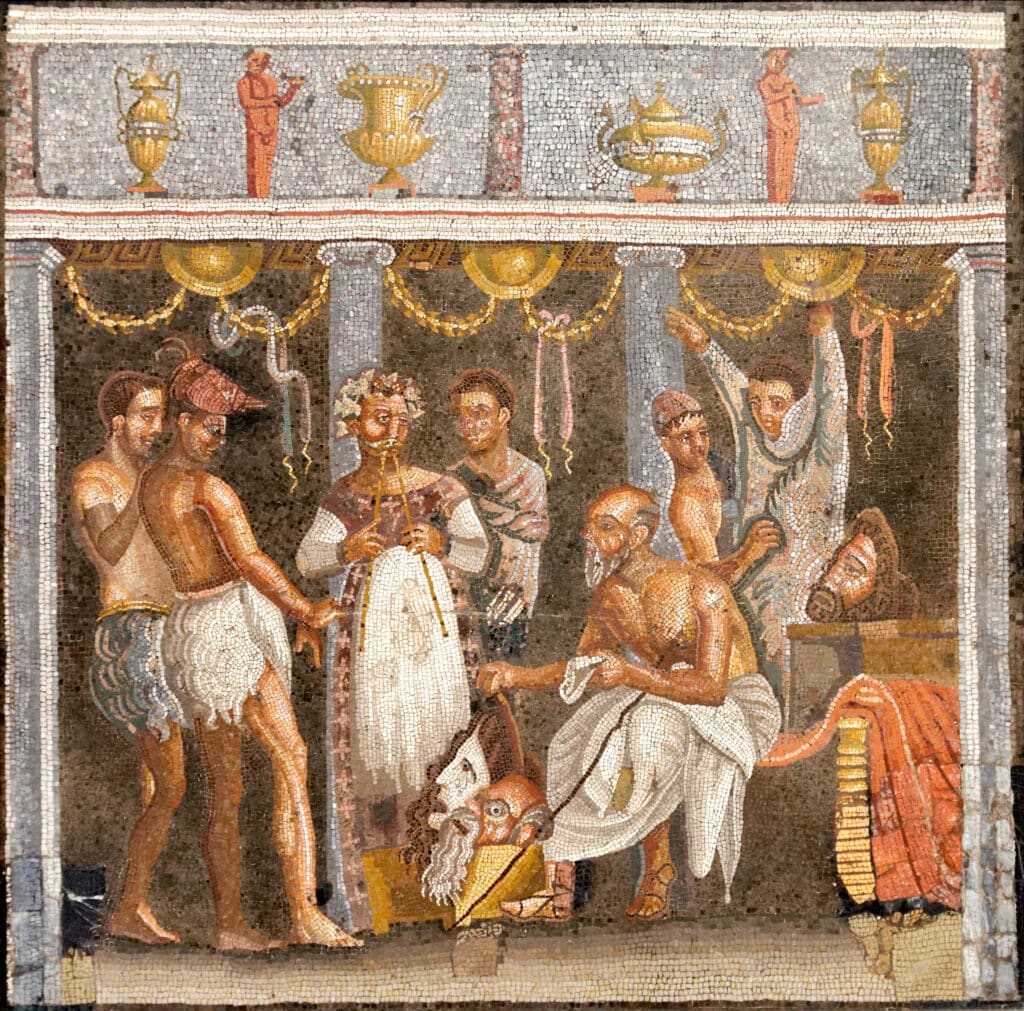
The earliest form of improvised theatre as a distinct tradition is probably the Atellan Farce, which was popular throughout the Roman Republic and the early part of the Roman Empire. Originating around 300 BCE, the Atellan Farce was a simple piece of masked improvisational theatre, performed for about half an hour before the Oscan athletic games, where players would inhabit a handful of stock characters to entertain the crowds.
Traditional accounts of the theatrical tradition treat the medieval era as an embarrassing interlude, where the Classical theatre was reduced to the harlequin and the fool – but the medieval theatrical tradition was sophisticated and developed. But it is perhaps no coincidence that modern improvisational theatre began in Renaissance Italy, where Roman ideals were being rediscovered and drawn into ideas of contemporary civic virtue. The commedia dell’arte, developed in Northern Italy but popular throughout Early Modern Europe, may well have grown out of the earlier Atellan Farce tradition: players would mask themselves and choose from a stock of character archetypes to improvise a short play, to the delight of the crowd.
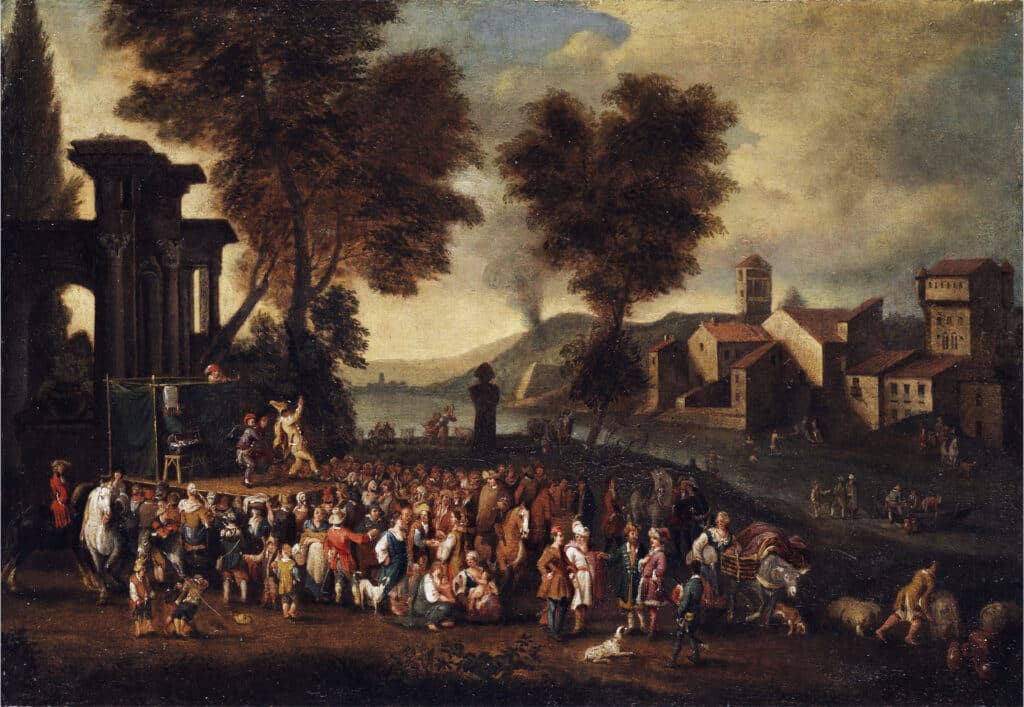
The archetypes (or, dare we say, ‘classes’) chosen by the actors were popular comic figures, for example ‘Il Dottore, the greedy head of the household’, ‘Il Capitano, the impostor military braggart’, or ‘Colombina, the clever maid who sets up the young lovers’. Where almost all of our nerd clubs and re-enactment camps were almost exclusively male spaces before the gender revolution of the mid-20th century, commedia dell’arte expressly welcomed women as equal participants, with female roles performed by women (unlike, for example, Shakespeare’s contemporary reliance on male actors for his strong female leads).
From Big Stage To Chamber LARP
By the 20th century, these traditions had lessened compared to stronger traditions of ‘formal’ theatre – traditions of improvisation had become subsumed as exercises in formal theatrical education, but the mid-20th century saw the re-emergence of an improvised theatrical tradition much more closely resembling the Atellan Farce and the commedia dell’arte. In the US, comedians such as Dudley Riggs took audience suggestions to build improvised scenes (Riggs founded the Brave New Workshop in Minneapolis, MN in 1958, an early forerunner of the improv movement). Legendary theatrical director Viola Spolin was critical to the formation of the Chicago improv scene in the 1950s and 1960s, out of the world-famous Second City troupe. Improv theatre lent itself well to the avant-garde and the radical: if the usual rules of writing a script and a linear plot could be thrown out of the window, why not other assumptions of the stage, like props and staging? New York’s Open Theater directly addressed social issues, politics, gender and class in its ‘post-absurd’ productions, that frequently incorporated improvisational elements.Nowadays, whilst improv theatre remains an acquired taste, improvisational comedy is universally popular: Saturday Night Live’s original cast were mostly Second City alumni, and improv podcasts such as I Will Write Your Book and Hello From The Magic Tavern bear the torch in the new millennium.
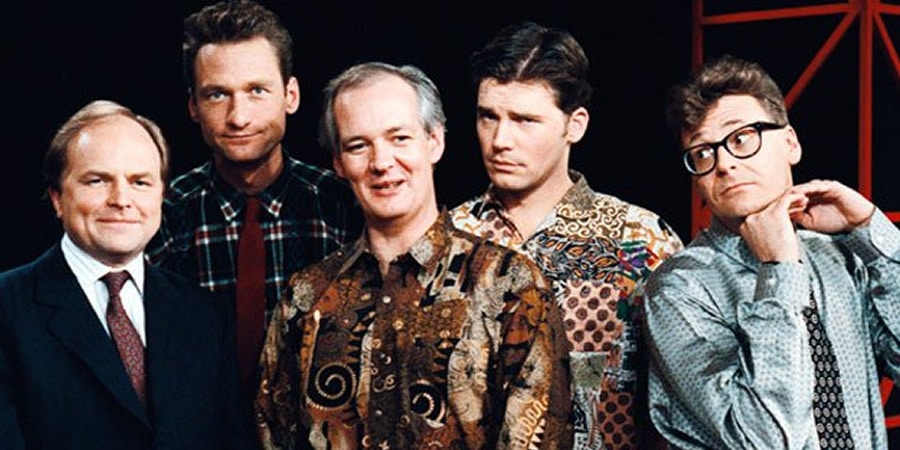
What is LARP related to improv theatre and comedy? Their common DNA is obvious: both are forms which usually take certain known archetypes, and place them in the hands of players who can explore themes and ideas with a great degree of latitude. But more directly, subtypes of LARP such as chamber LARP and Nordic LARP share much of their heritage with the theatrical tradition. For example, Nordic-style LARPs view live-action roleplay less as a ‘game’ to be played, and more as an art-form through which to understand the human condition. Emerging in the late 2000s in Scandinavia, Nordic LARPs are characterised by their eschewing of complicated rules (preferring unobtrusive and simple rules that don’t break the players’ immersion), the introduction of heavy themes such as trauma, love and loss, and also the use of theatrical tools such as workshopping and debriefs to aid in the experience. As well, chamber LARP takes inspiration from the theatrical ‘chamber play’ – all of the action is contained within a single room, and is often completed by the end of the evening. Some chamber LARPs even eschew costumes, making them more accessible, and drawing on the avant-garde improv tradition which relied upon immersion to surpass the need for props and costumes.
A Complete Triple Helix
So – what have we learned? We can conclusively state what is LARP: a set of games which draw on a diverse set of traditions, including improvisational theatre, historical re-enactment and the fantasy milieu of the 1970s, where participants physically portray their characters in a wide variety of tones and settings. Obviously this only scratches the surface of the hobby, which grows more diverse every year – with new settings, new accessibilities and new systems devised every year.
But remember – as you gird yourself in preparation for the orc invasion – you’re standing in the footsteps of a 300,000 year LARPing tradition! Your ancestors smile upon you. Now meet death with a smile upon your face! CHARGE!

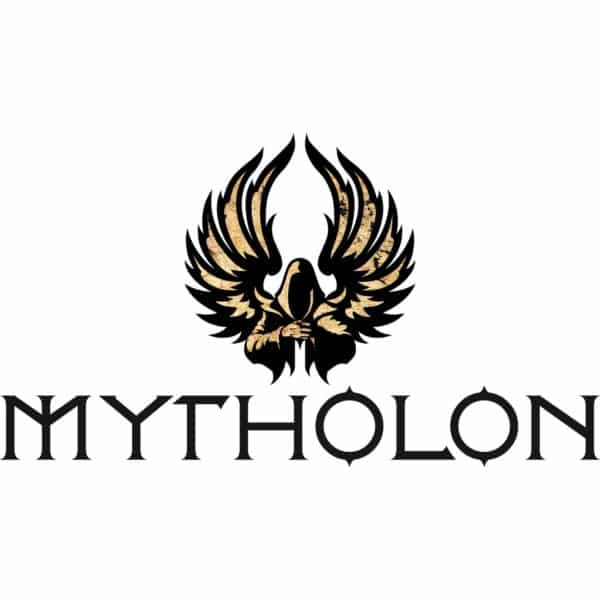
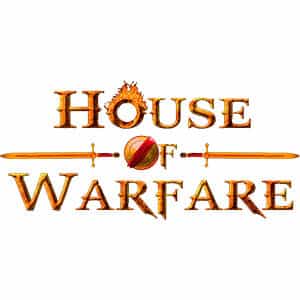


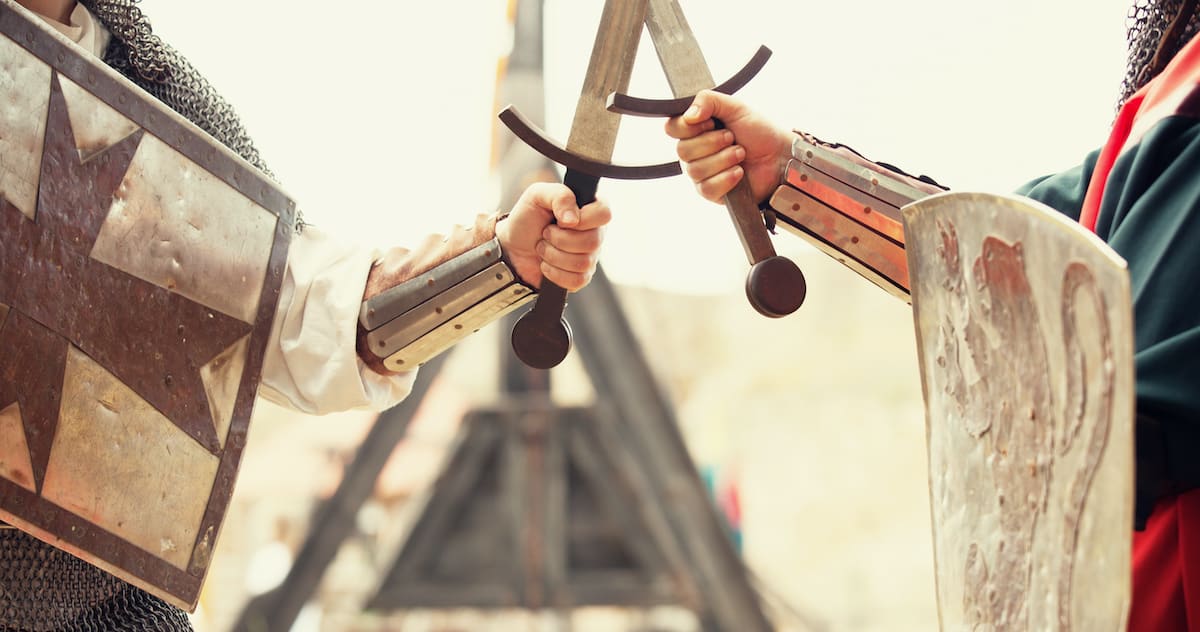 Historical Swords
Historical Swords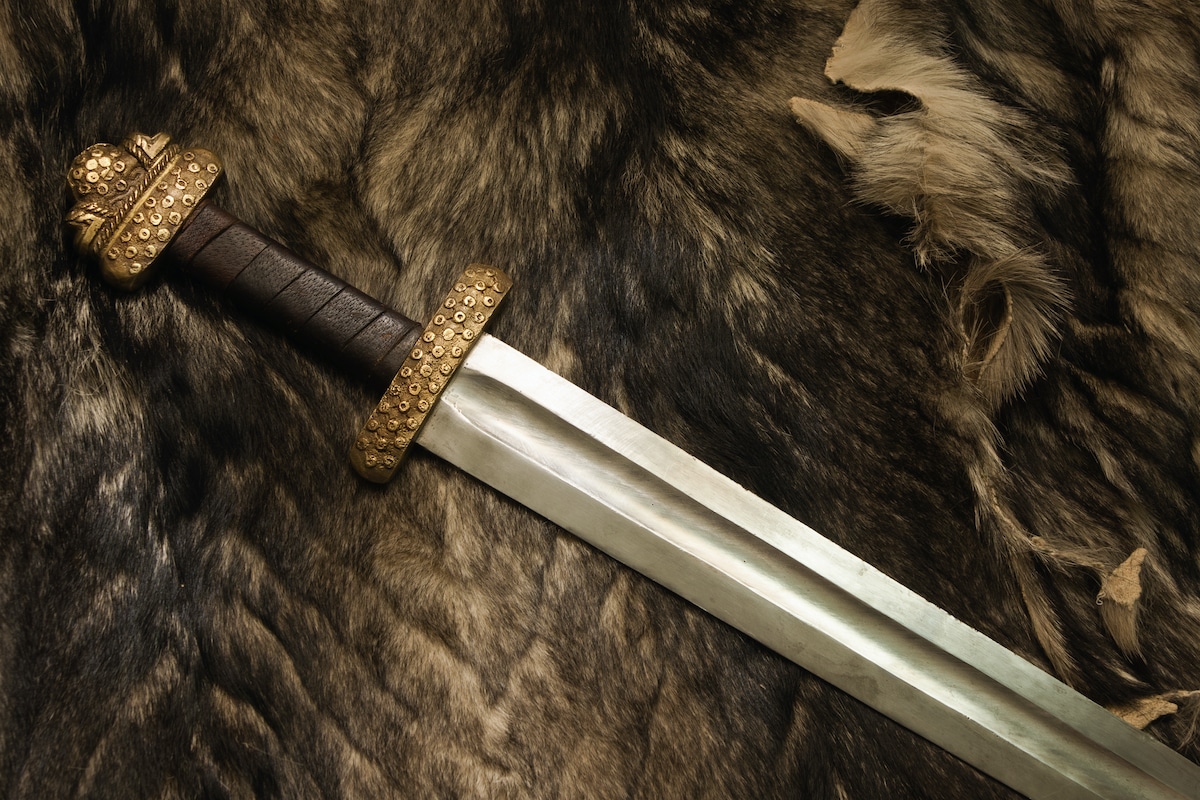 Norse & Viking Swords
Norse & Viking Swords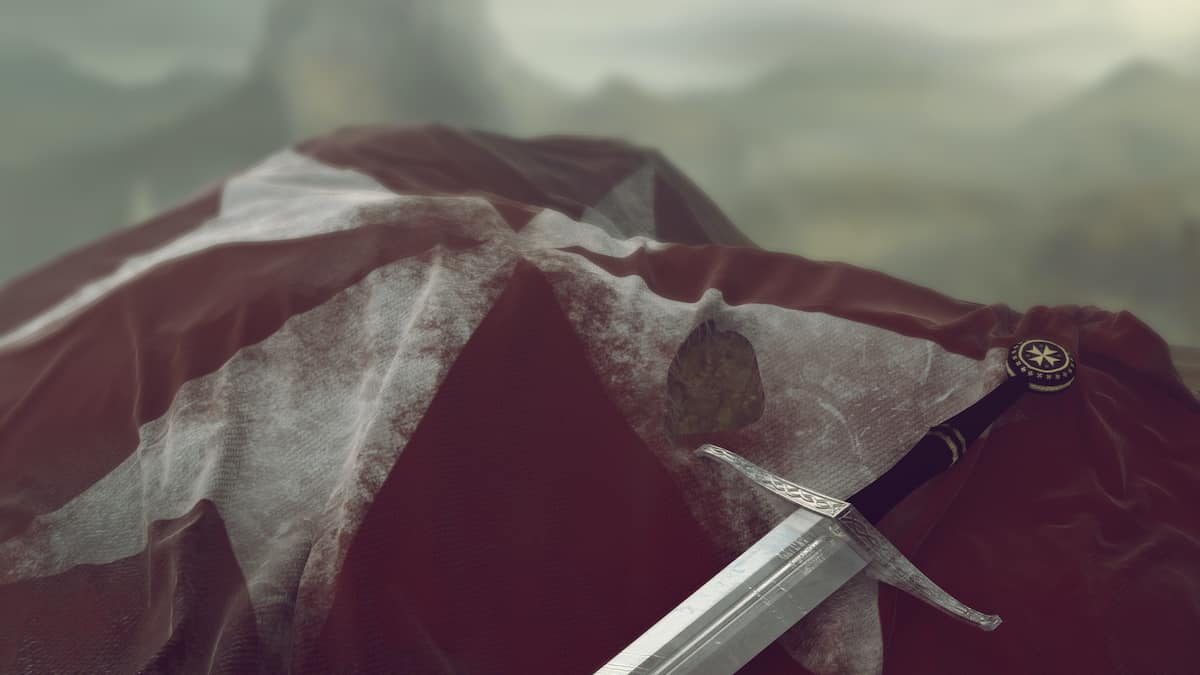 Templar Swords
Templar Swords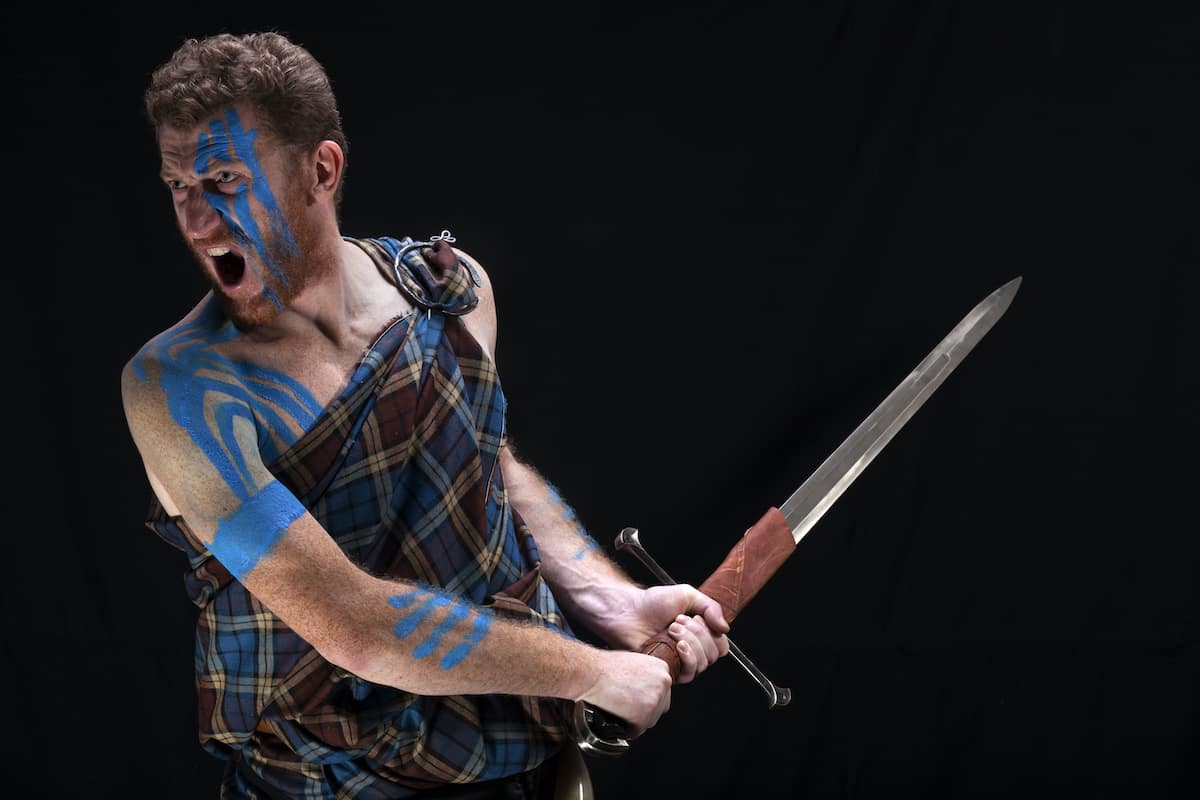 Claymore Swords
Claymore Swords Fantasy Swords
Fantasy Swords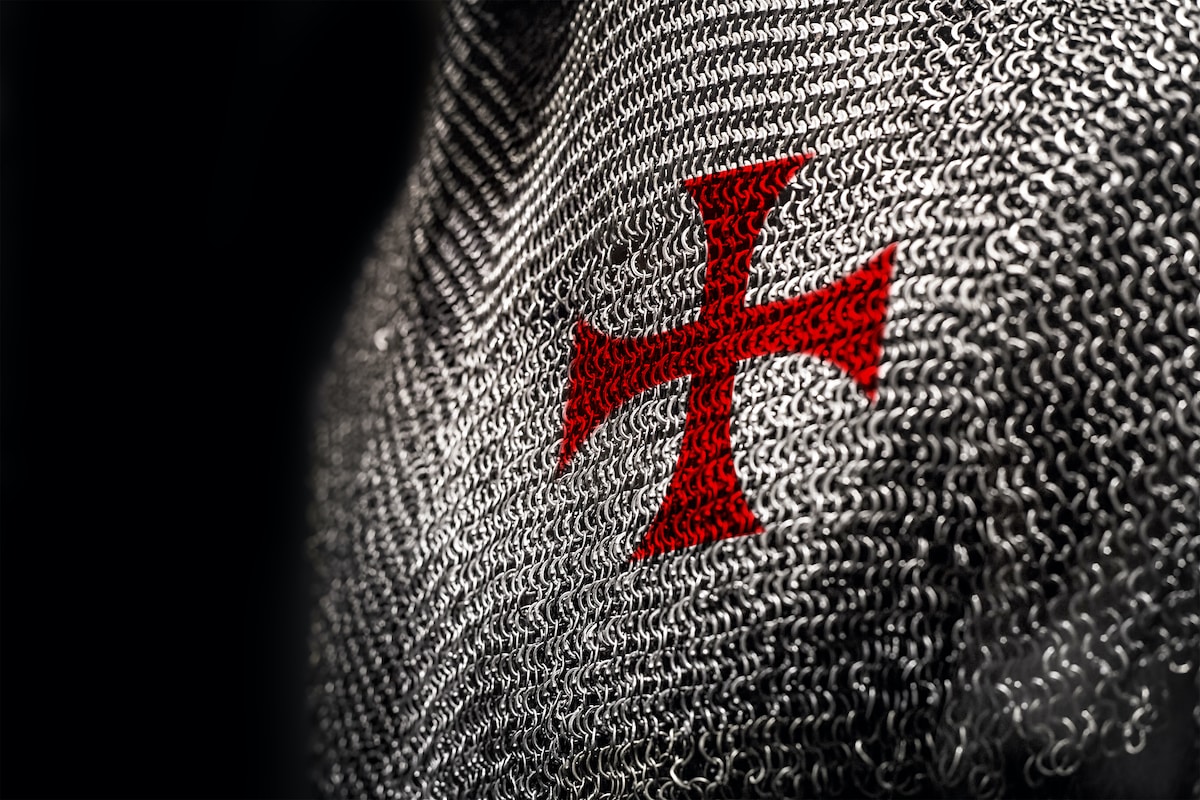 Chainmail
Chainmail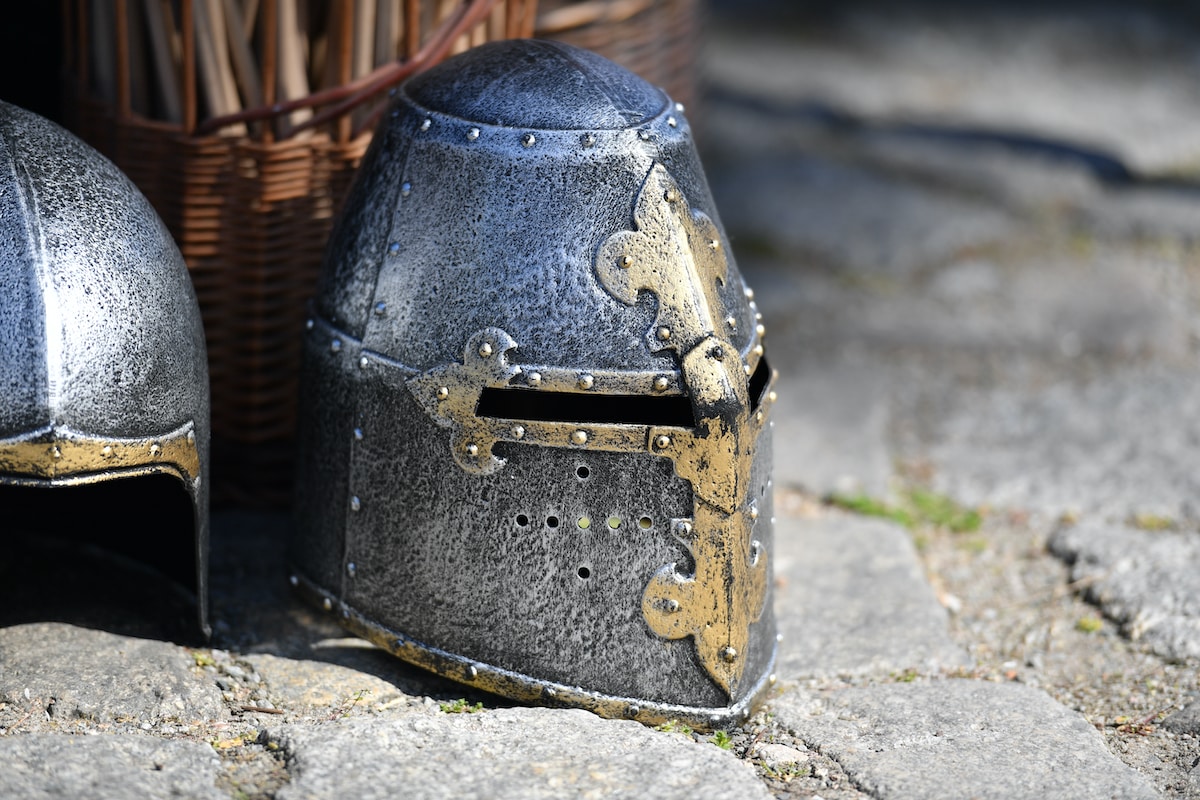 Helmets
Helmets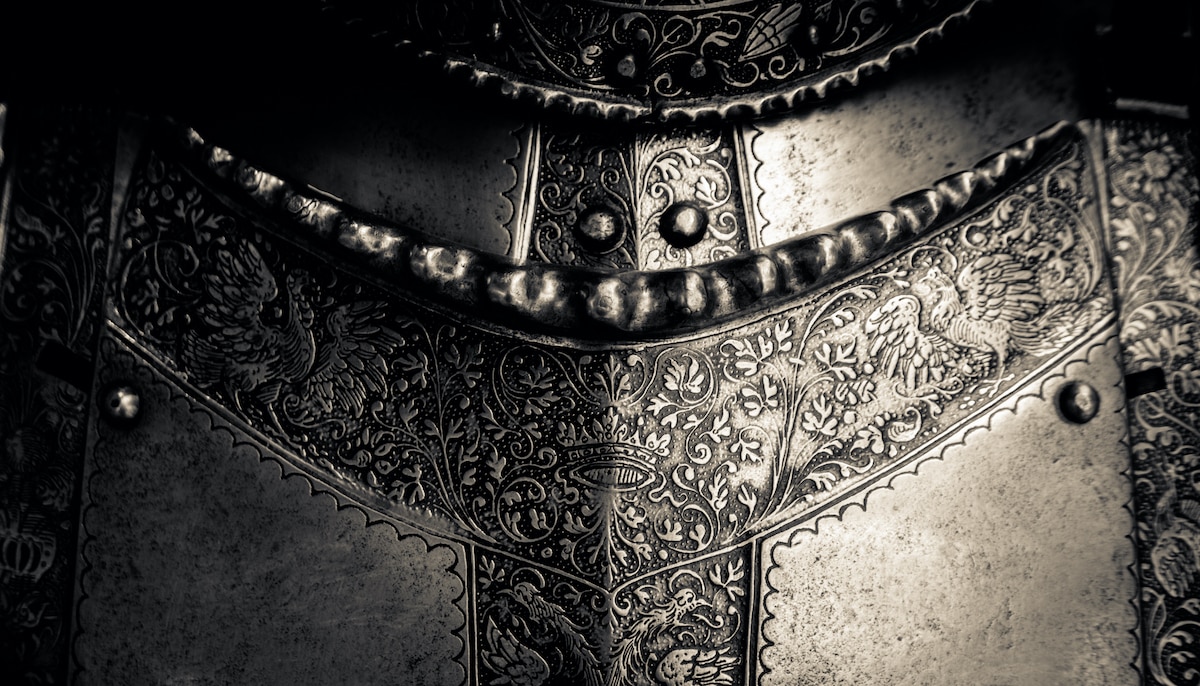 Torso Armor
Torso Armor Bracers and Arm Protection
Bracers and Arm Protection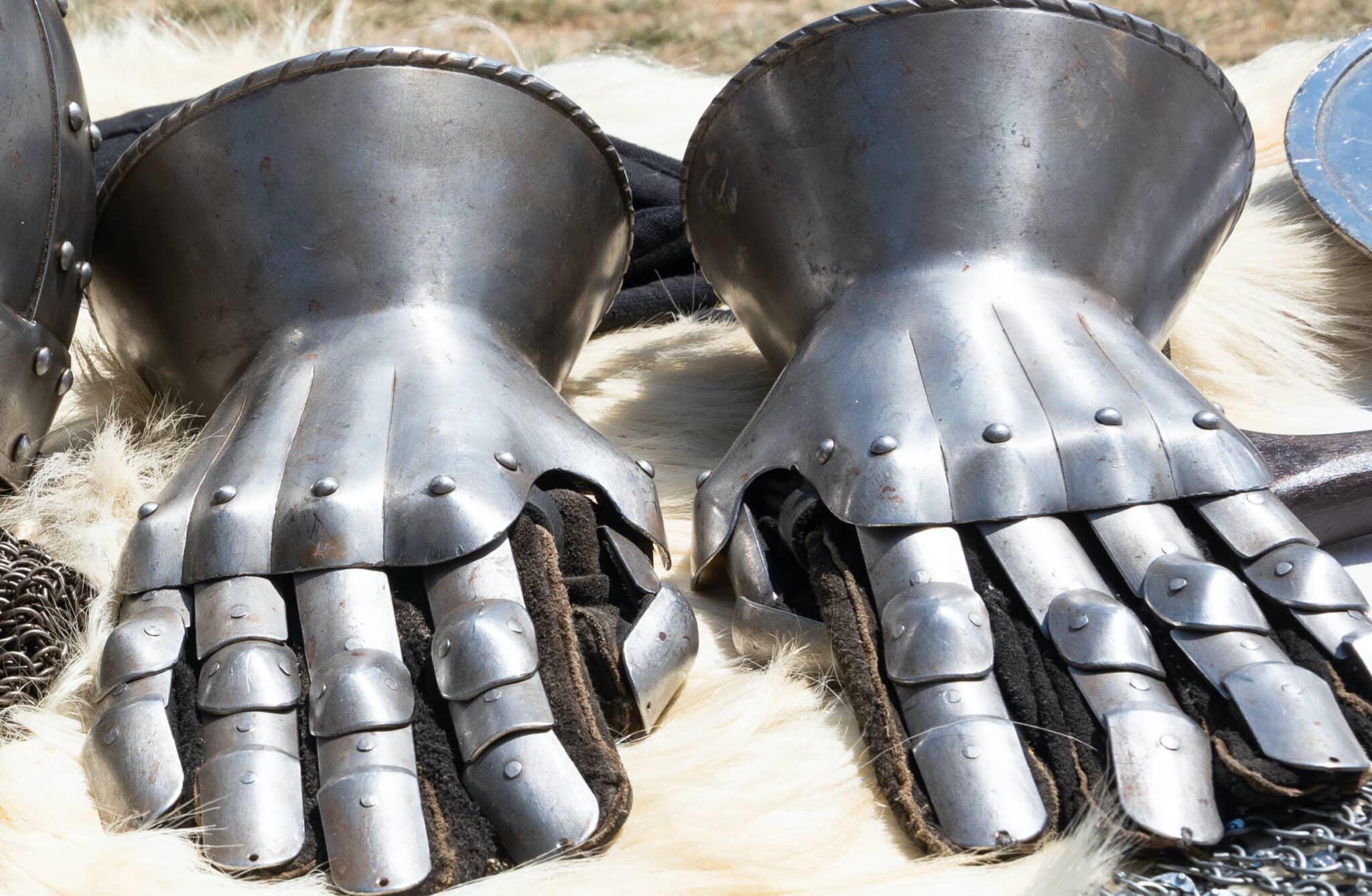 Gauntlets
Gauntlets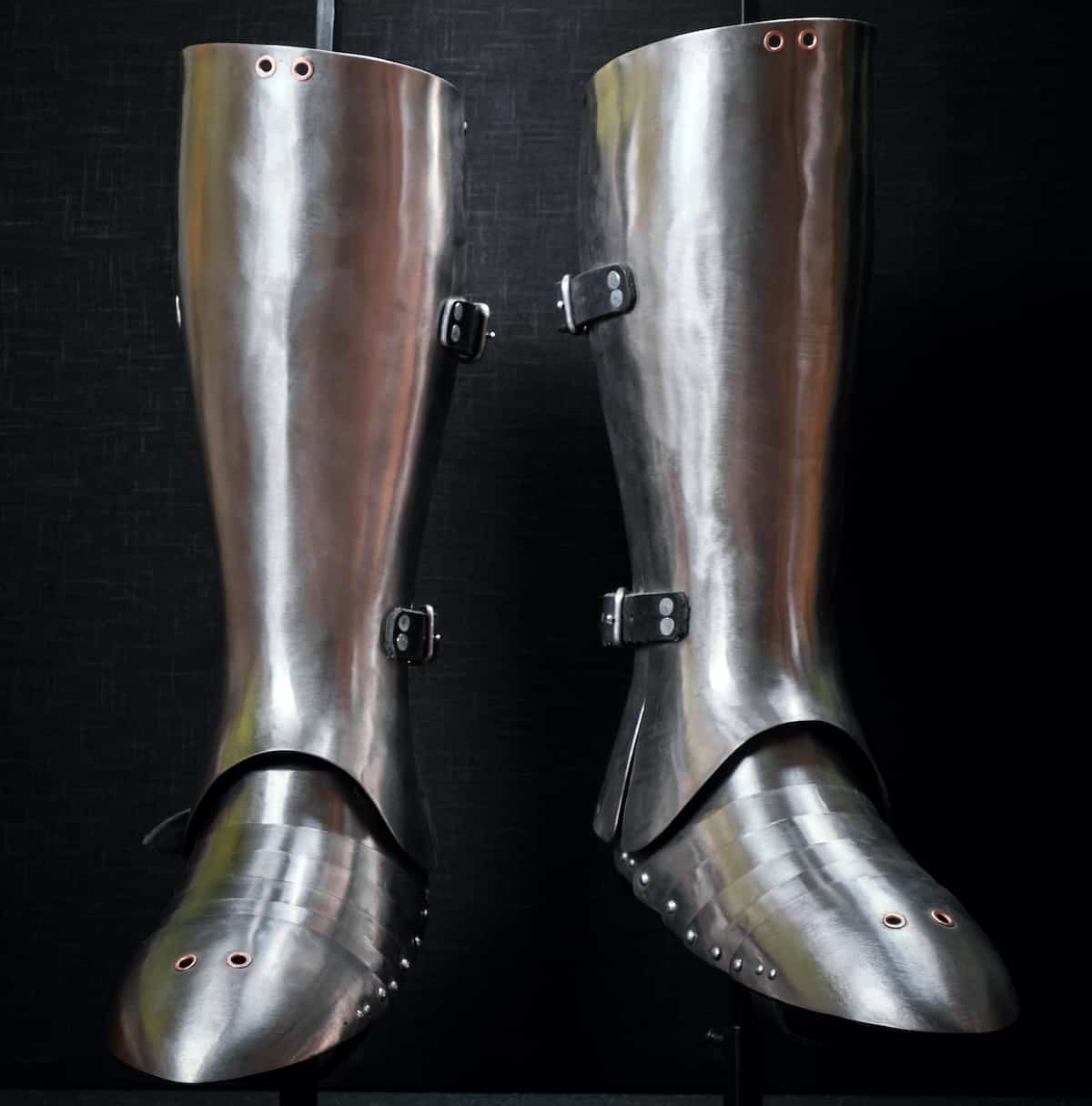 Leg Armor
Leg Armor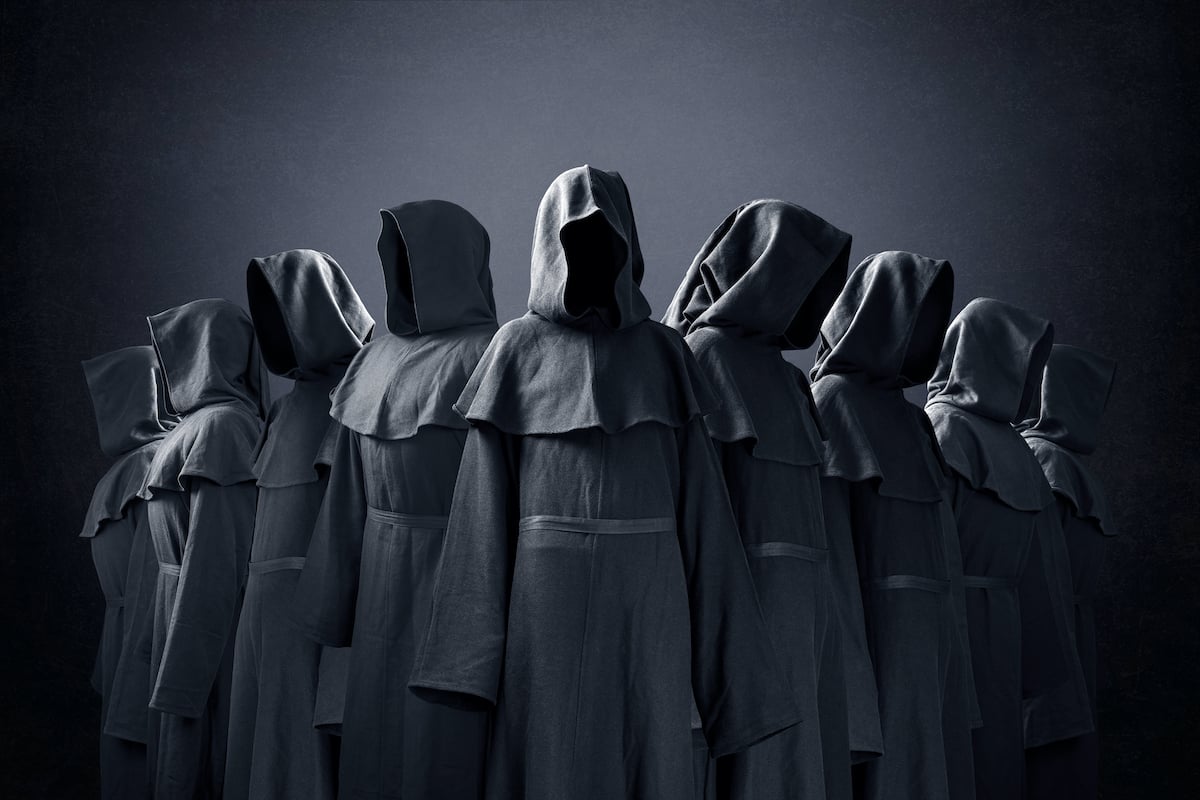 Cloaks
Cloaks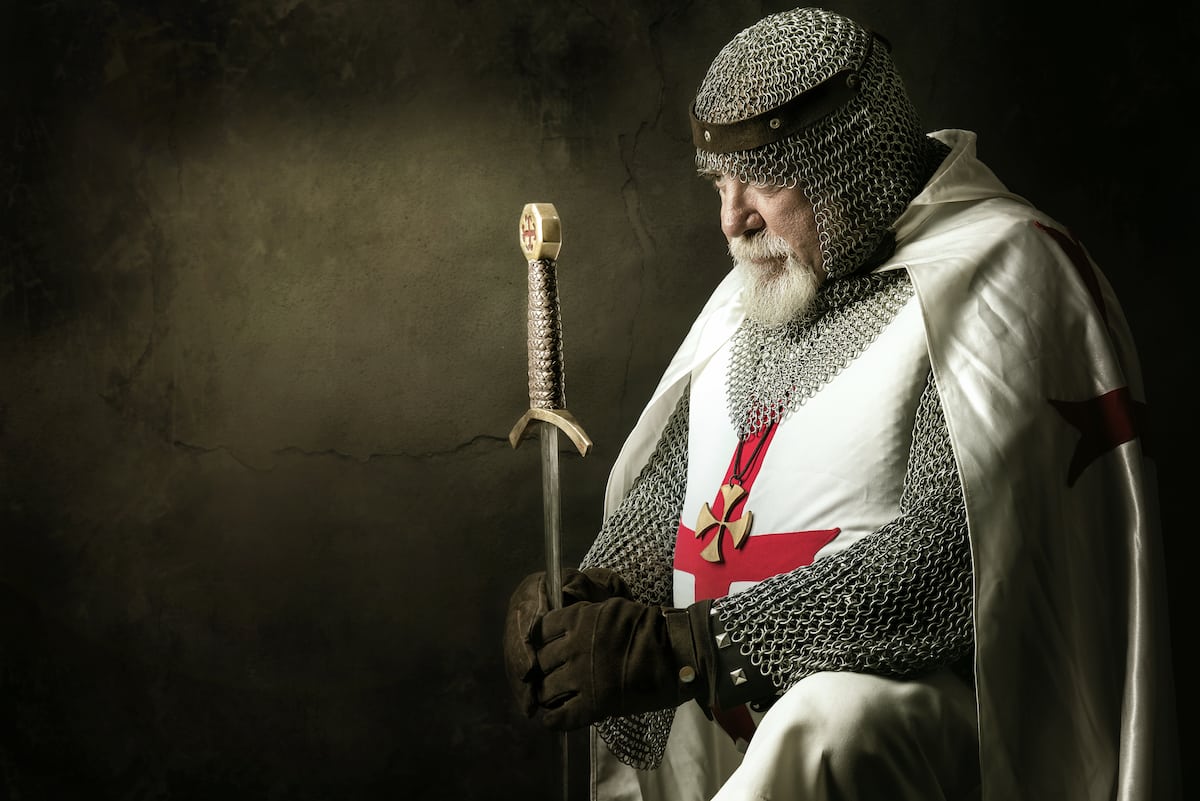 Tabards
Tabards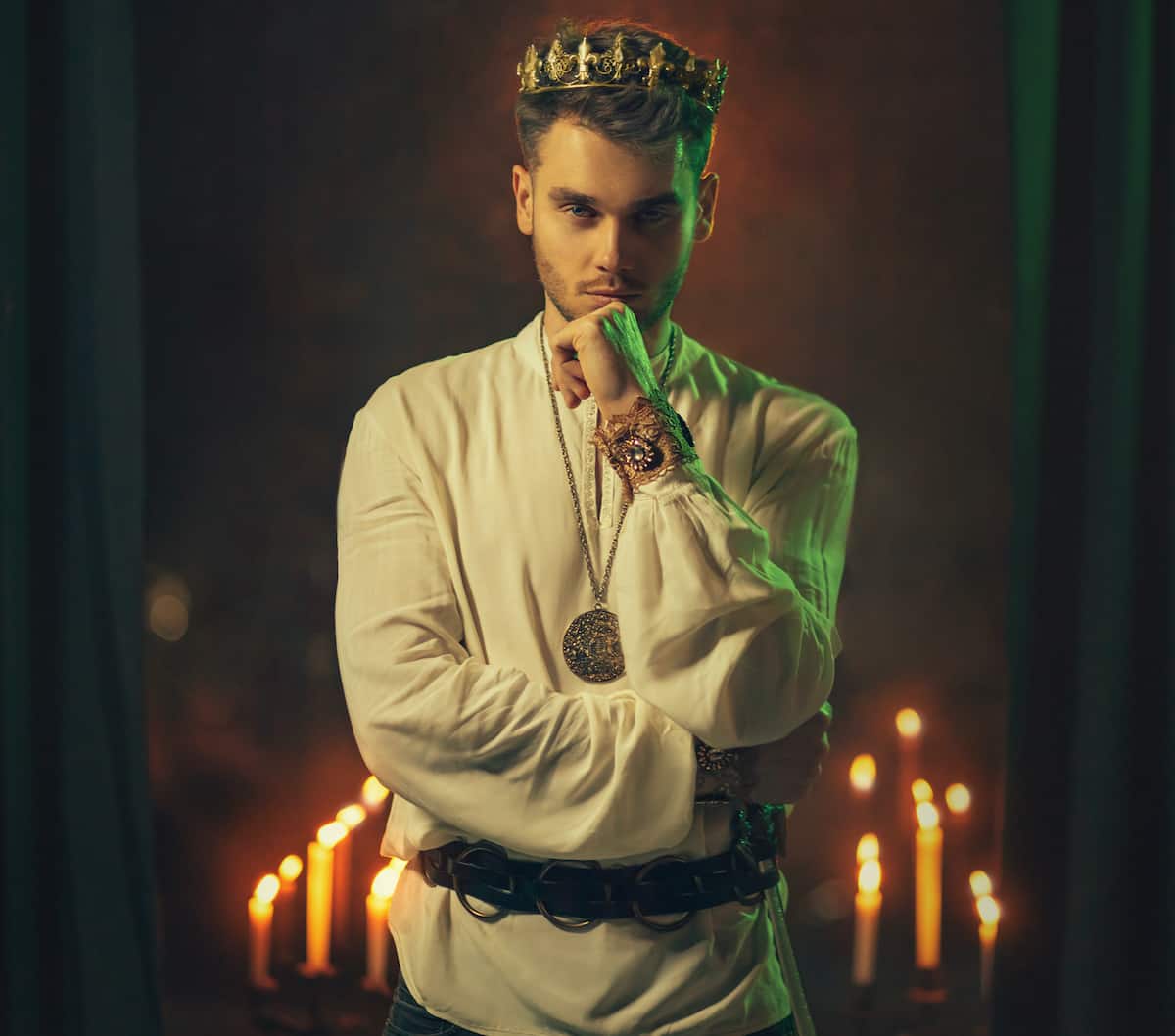 Shirts
Shirts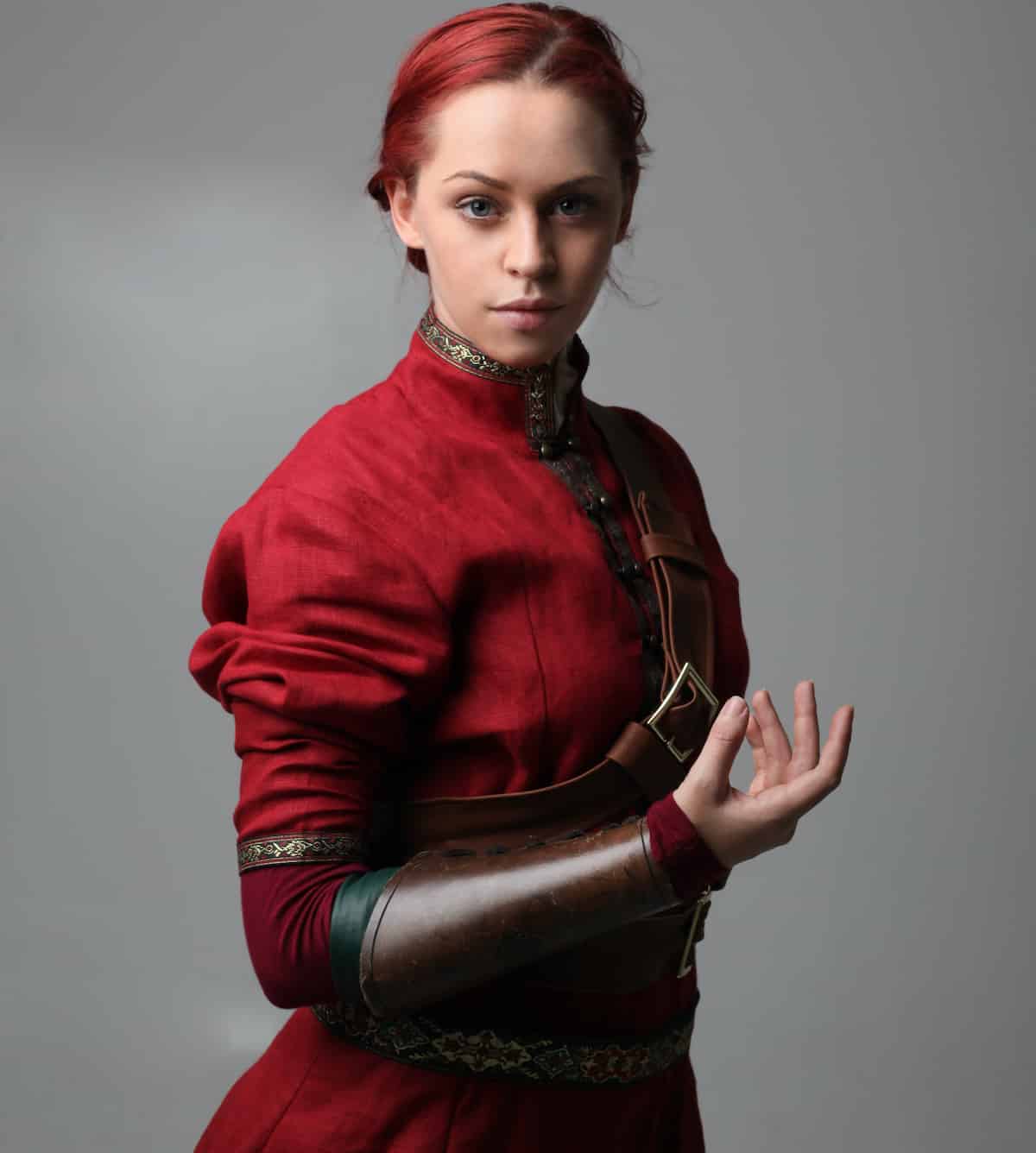 Tunics
Tunics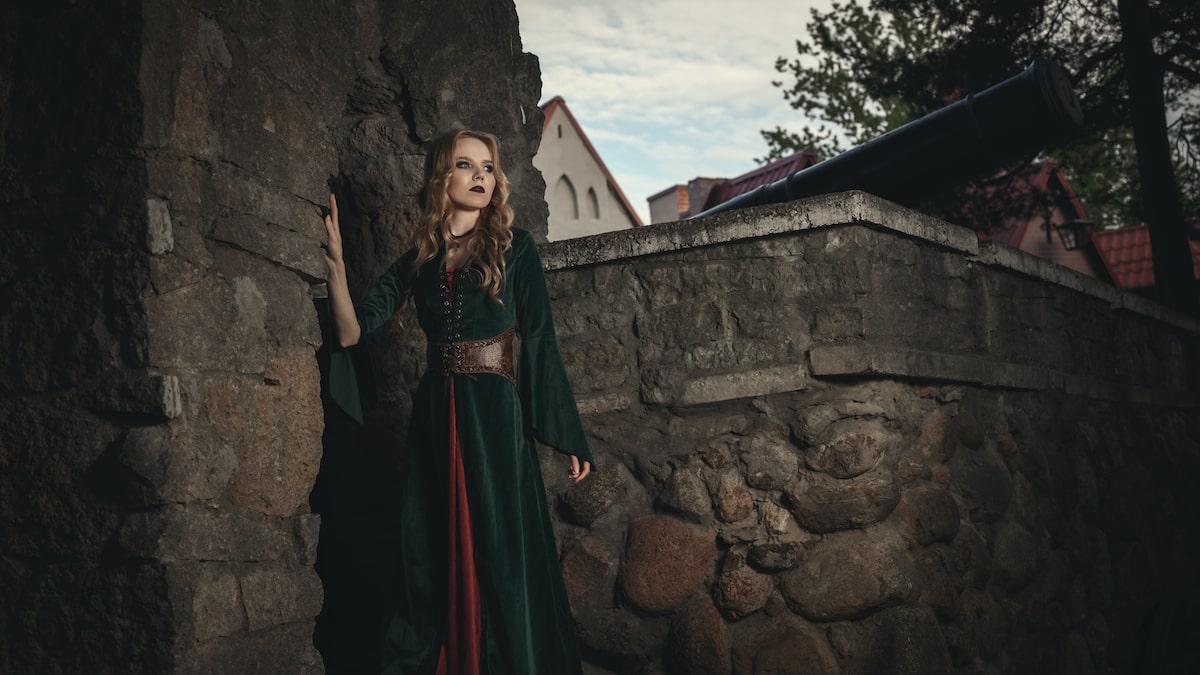 Dresses
Dresses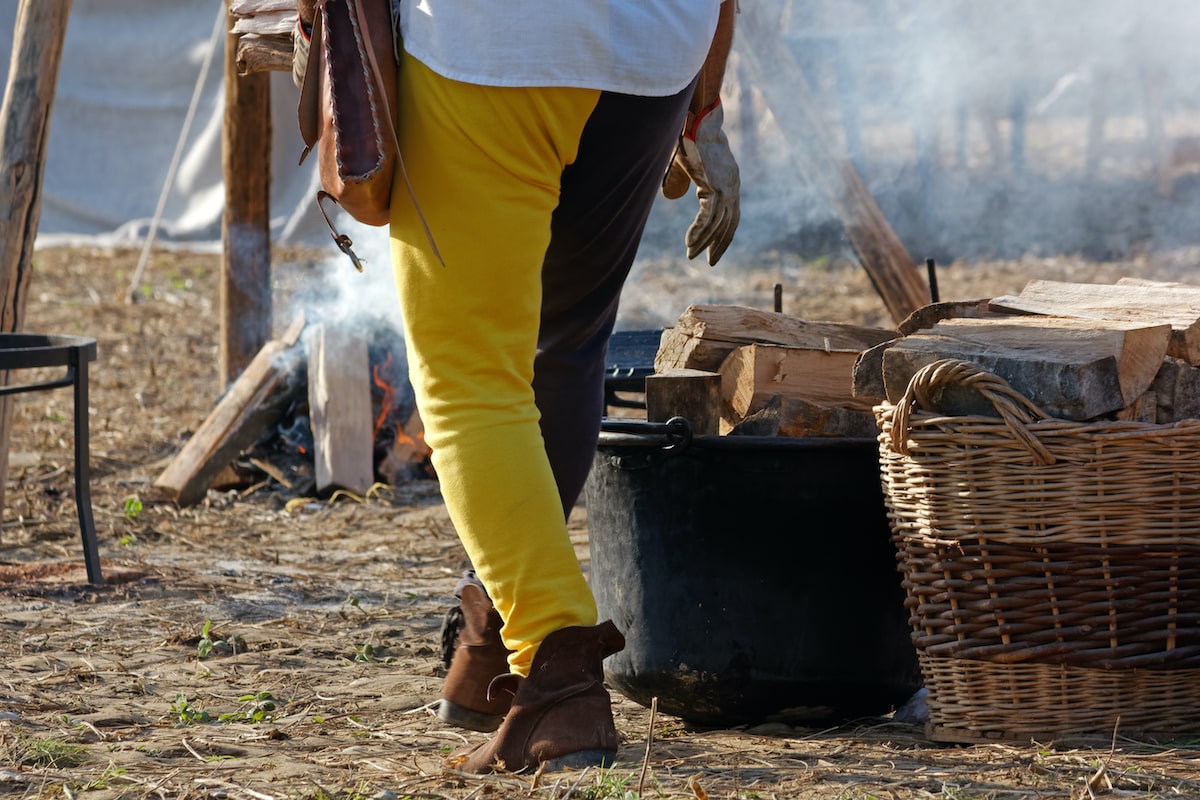 Pants
Pants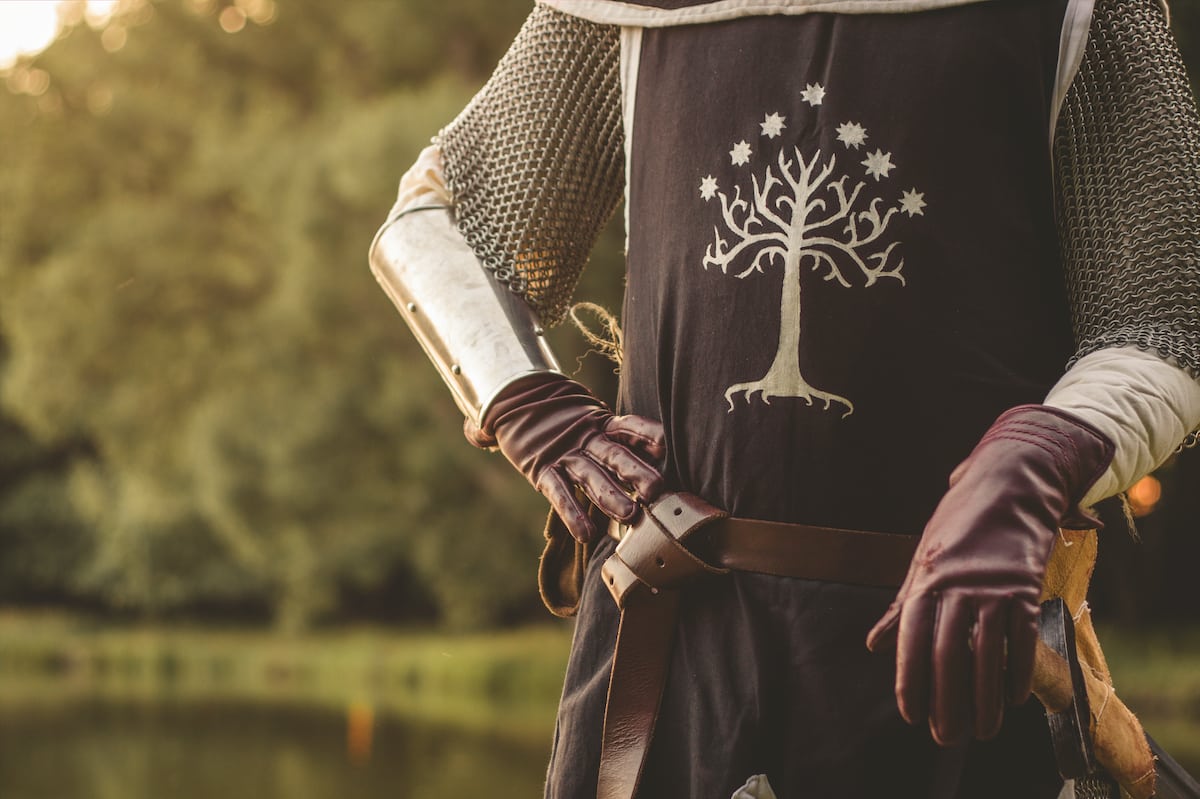 Gloves
Gloves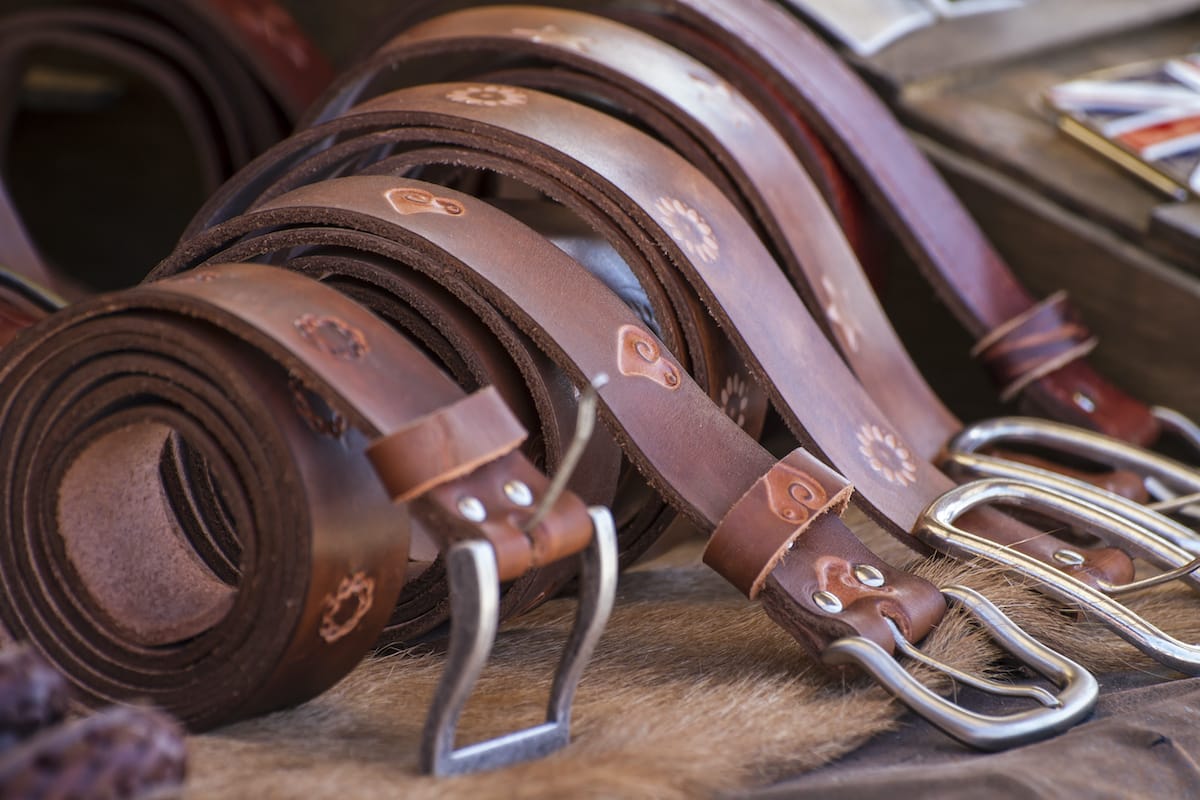 Belts
Belts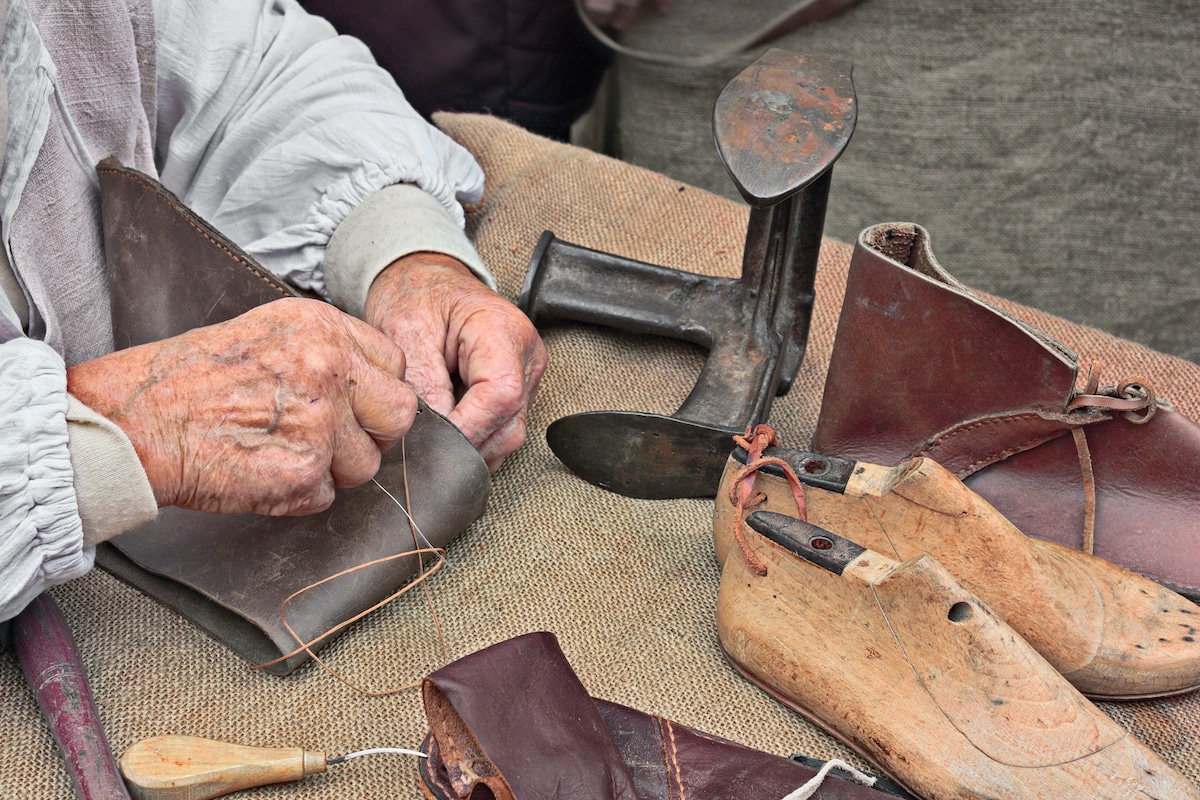 Shoes
Shoes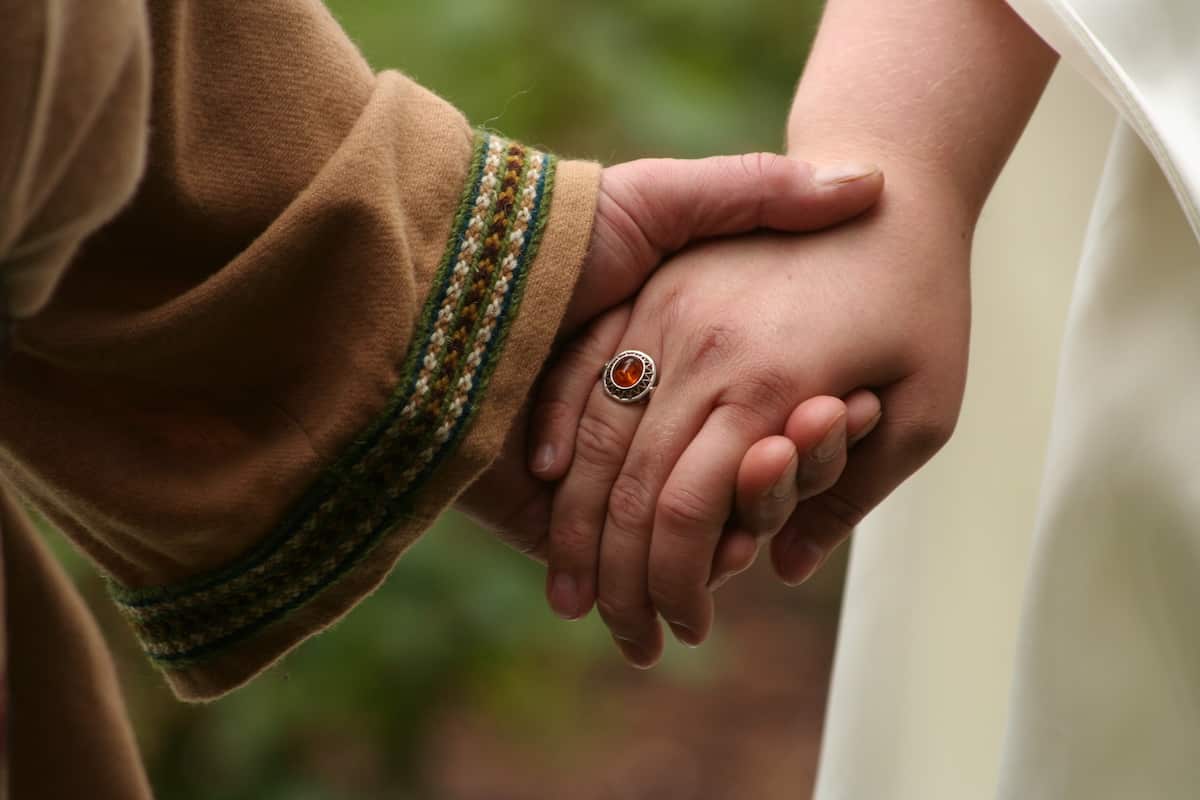 Rings
Rings Necklaces & Pendants
Necklaces & Pendants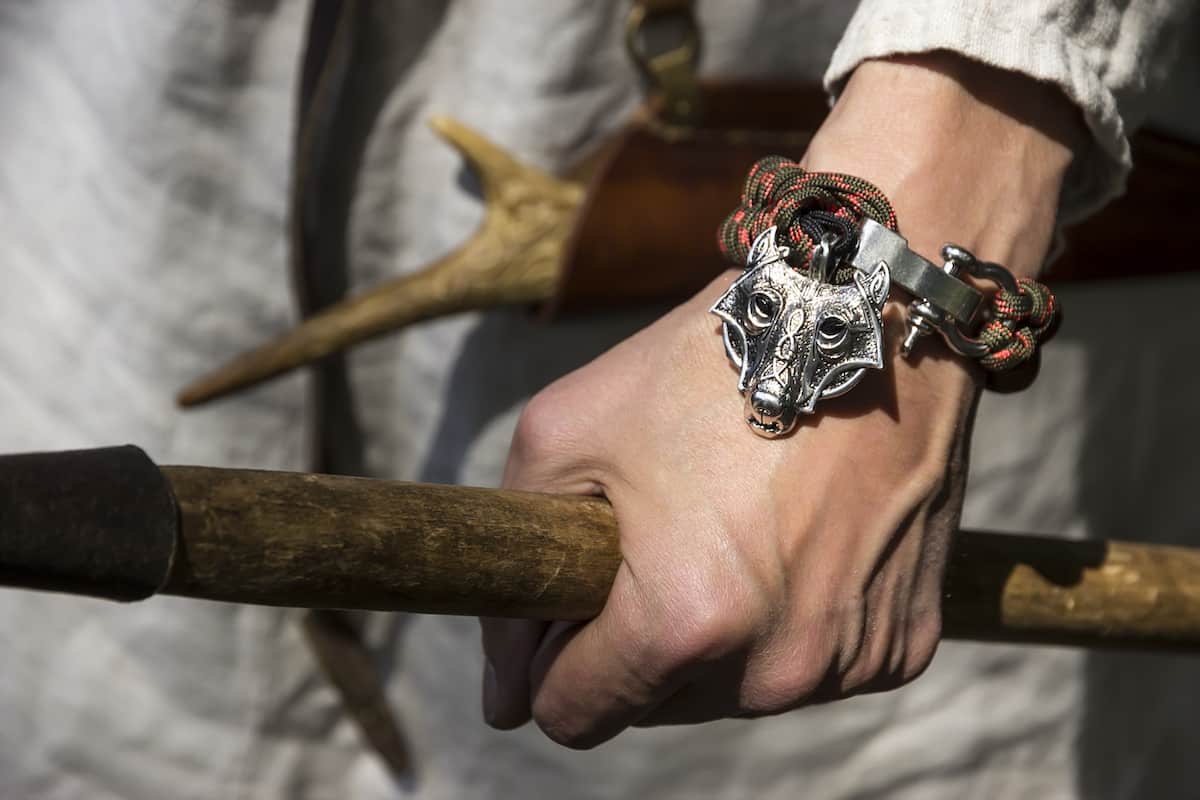 Bracelets
Bracelets